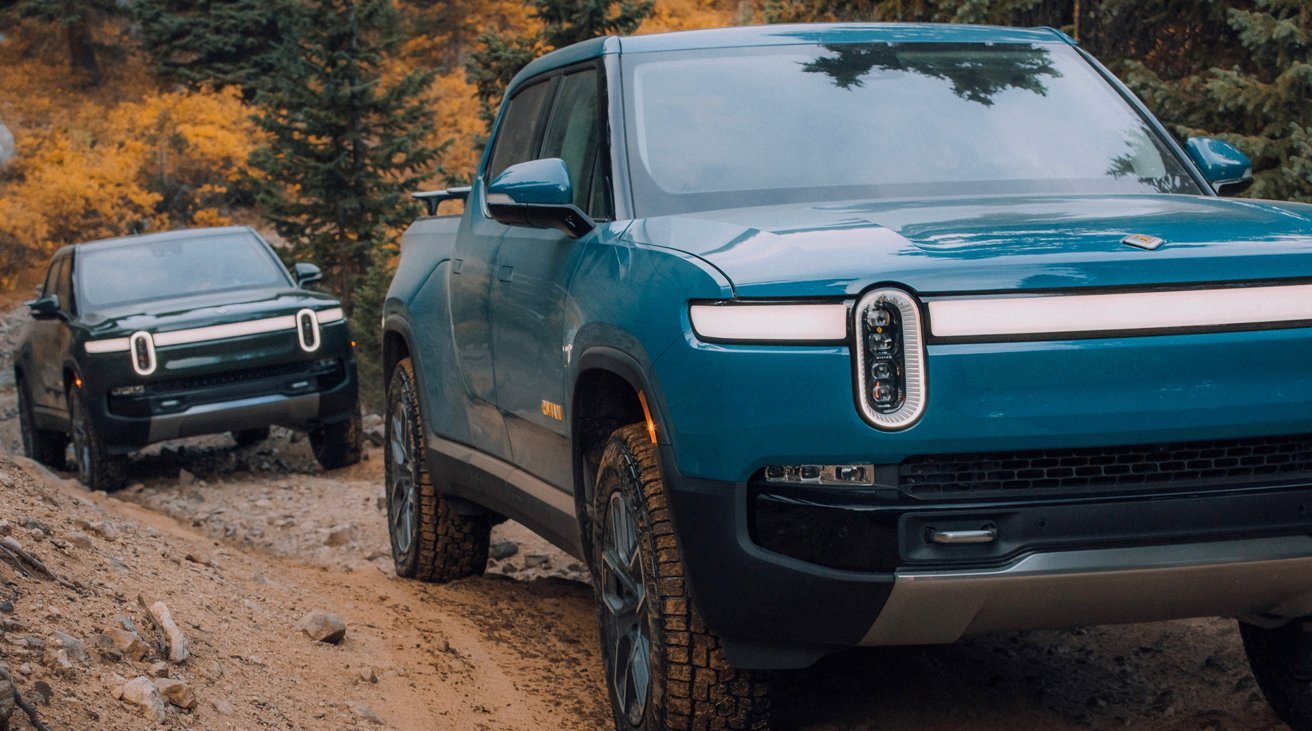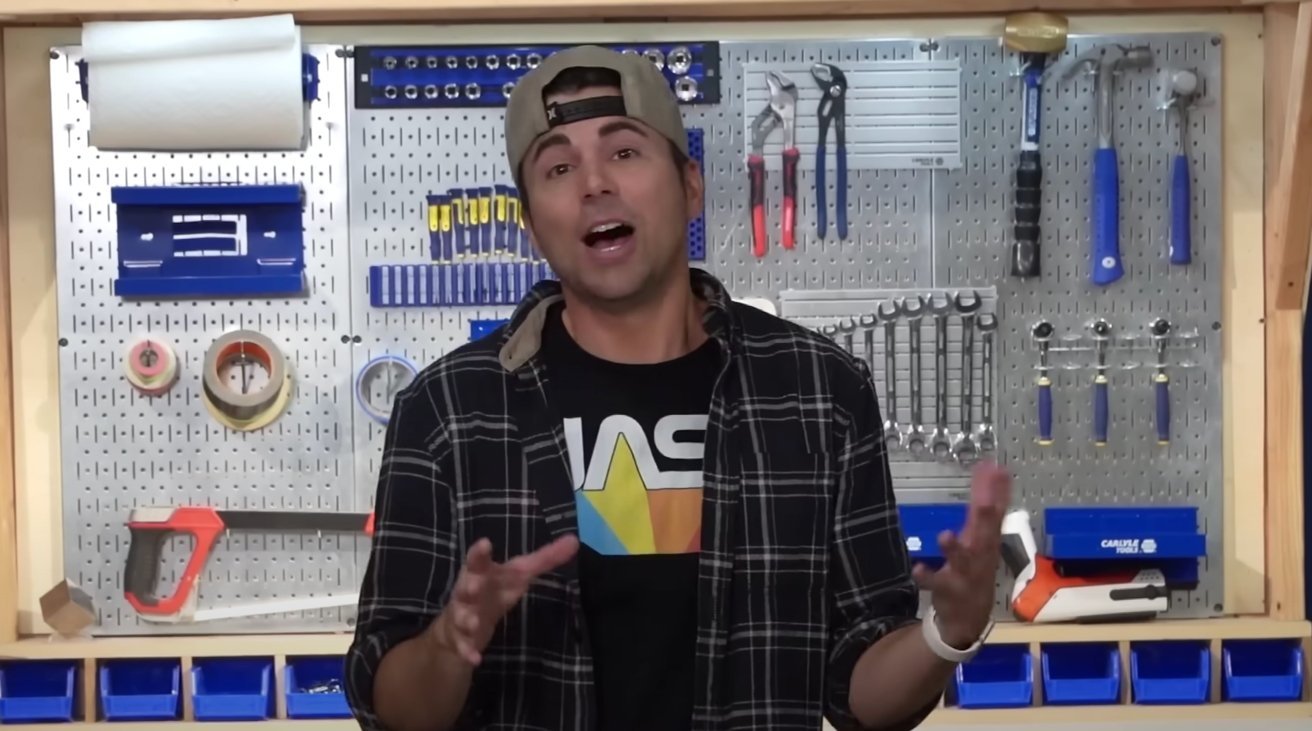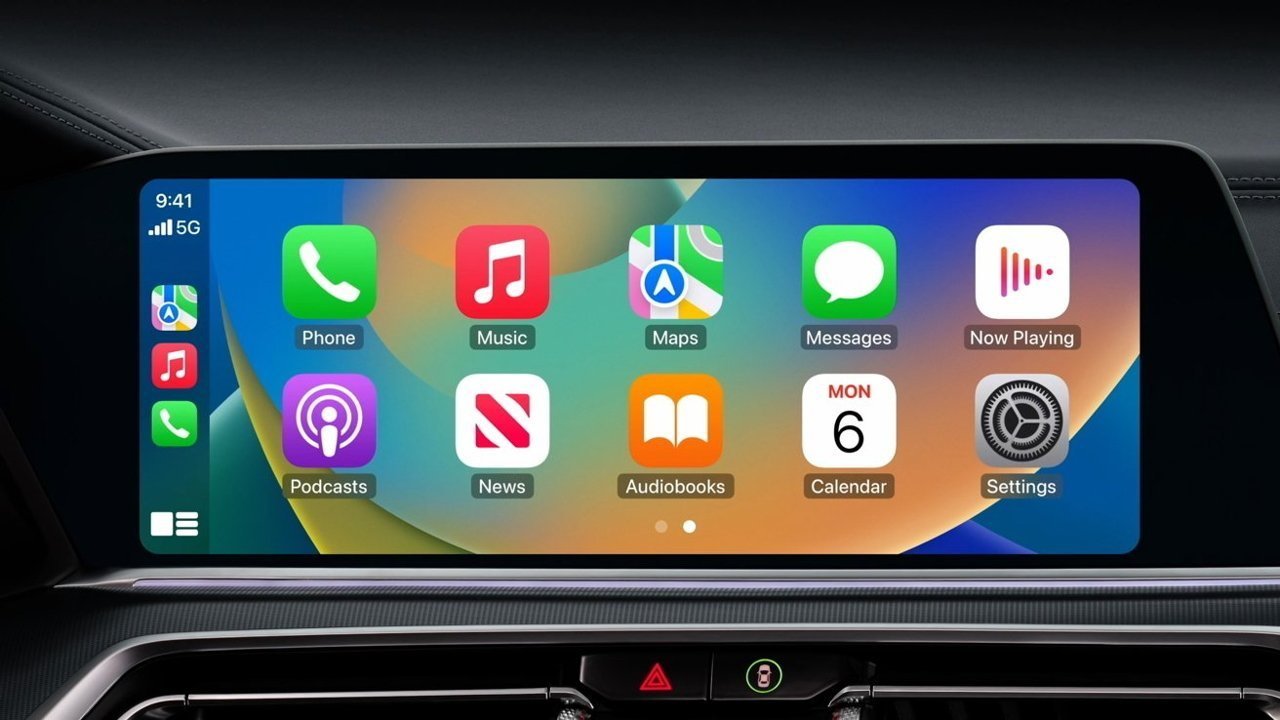Like many other projects Apple has undertaken, the Apple Car has been in the works for almost a decade. Here’s the story so far, from when we first starting hearing about Apple working on it.
Apple’s Car is said to be self-driving, have a radical design that departs considerably from conventional vehicles. It could be the next step for Apple as a company to grow.
At the start of 2021, reports started to surface claiming Apple is in negotiations with potential manufacturers to actually make the Apple Car a reality. This prompted renewed interest in the often-rumored product, an interest that has sustained ever since then.
Naturally, this included many analysts offering their opinions on Apple taking on a completely new industry, but some are pessimistic on the timing. While some early reports have suggested a 2024 production run for the Apple Car, analysts have warned the immaturity of self-driving technologies could limit what Apple ultimately offers in its product, or even delay its release.
As time marched on, analysts then changed their predictions to be later, to beyond 2025 in some cases. There have also been repeated claims of employees being brought aboard, employees leaving, changes in key personnel, and allegedly a mothballing of the project altogether.
Apple has already been working on the concept for at least eight years so far, investing billions intothe project. There have also been countless patent filings showing Apple has continued to work on redesigning the concept of the car throughout the period.
Just as it is likely Apple could take things slowly to enter the automobile market, it’s just as likely that it could do so relatively quickly, given the extensive reporting history.
Here’s a run-down of the rumors and reports surrounding the car and “Project Titan” in general, covering from the first murmurs of its development up until the latest rumors.
“Project Titan” name uncovered in 2014
The earliest mentions of Apple’s automotive project were in fall 2014, when AppleInsider was informed Apple was in the process of recruiting engineers. Said to be hired for a project called “Titan,” the rumors were not able to be verified, so they were not published at the time.
Months later, the details of the rumors were corroborated by other sources and outlets, indicating there was some truth to what was claimed, as well as the “Project Titan” name.
SixtyEight Research and Sunnyvale Offices found in 2015
By March 2015, it was believed Apple was working on an electric car in offices in Sunnyvale, California. Said to be the home of a market research firm called “SixtyEight,” the building was apparently known internally as “SG5,” and was among other Apple-run offices. AppleInsider broke the story by visiting the location and examining the buildings, and related filings.
The building was a few minutes away from Apple’s then-HQ at 1 Infinite Loop, and sources claimed Apple was actively receiving shipments related to the work there. Overall, Apple’s offices consisted of seven buildings, making up almost 300,000 square feet, though many were used for other tasks.
One at street number “175” seemingly didn’t have a listed tenant, despite not being on the market for months at that time, and included a 4,239-square-foot “repair garage” among building permits for tenant improvements. An in-person visit revealed it to be the home of “SixtyEight Research.”
The secrecy of the project at the offices apparently extended to Apple employees being told to turn their badges around when entering the building. Guests visiting the location were given badges that were identical to those used at Apple’s HQ, but without an Apple logo.
The use of frosted glass and visible security cameras suggests a level of secrecy beyond a typical research firm. A piece of paper taped to the front door informed drivers the company’s lobby was moved to a different address, a building leased by Apple.
“SixtyEight LLC” was registered in Delaware in March 2014, then licensed as a foreign corporation in California in November 2014. Given Apple’s historical use of shell corporations to hide secret projects, it is plausible that this was also the case.
The company also paid to import a 1957 Fiat Multipla 600 from the U.K. to the U.S. Apple Design chief Jony Ive was said to have a soft spot for the Fiat 500, which could be another connection to Apple.
Hundreds at work in early 2015
In February 2015, it was reported Apple had “several hundred” employees working on the project, in its own development facility away from the main Infinite Loop campus. The report claimed iPod and iPhone designer Steve Zadesky was running the project, and was given free rein to pull talent from any existing Apple groups.
Among the hires staffed with automotive executives was allegedly former Mercedes-Benz R&D head Johann Jungwirth, who joined the company as a Mac systems engineering leader in fall 2014.
Tesla CEO Elon Musk also claimed Apple had tried “very hard” to poach engineers from the company, by offering 60% pay raises and $250,000 bonuses.
Camera vans spotted in 2015
In February 2015, minivans were spotted in California that were thought to be part of an Apple project, as at least one of the vehicles was found to be registered to the company.
The vehicles had an X-shaped frame mounted to the luggage rack, as well as dark recesses that seemed to contain cameras, disc-shaped antennas, and a sensor on the rear wheel. Spinning cylindrical devices on the front and rear seemed to be LiDAR sensors.
While the vehicles were thought to be used for an updated Google Street View-style update to Apple Maps, there’s also a possibility this was a precursor to Apple’s later self-driving vehicle research.
Hiring continued at pace in 2015
By August 2015, it was reported Tesla senior engineer Jamie Carlson switched sides to Apple, as revealed by a LinkedIn profile change.
Carlson joined Apple along with at least six other hires with self-driving vehicle development experience.
One month later, other potential self-driving car-related hires were revealed, including automotive algorithm and imaging experts from a diverse range of institutions and backgrounds.
Meanwhile, Apple’s poaching from Tesla was apparently starting to cause problems and was beginning to impact Tesla’s product roadmap. It was suggested rumors of the Model 3’s delays were prompted by the exodus from Tesla to Apple.
Naval base talks in 2015
To help with testing “Project Titan,” Apple was reported in August 2015 to have been in talks to rent a 2,100-acre property near San Francisco. Public records revealed Apple had met with GoMentum Station, a former naval base, to use the property for autonomous vehicle testing.
Unusually, a GoMentum Station official confirmed the talks and that it had signed an NDA with Apple.
The facility reportedly included highway overpasses, railway crossings, and other typical road features, making the grounds especially useful for testing self-driving vehicle systems.
Searching for partners, back in 2015
Apple had a number of roadblocks to navigate if it were to create a full vehicle, a source confided to AppleInsider in September 2015. Problems that may force it into working with an established partner.
The supposed timetable for the project’s creation, which would see it trying to start manufacturing within five years, could’ve resulted in Apple seeking out a partnership as a form of short-cut to market.
A report at the time put Apple at aiming for a 2019 shipment date for the vehicle, a schedule it did not manage to achieve.
This included problems planning out a possible manufacturing site. One month prior, Apple had acquired a 43-acre building plot in San Jose, which at the time was considered a possible venue for development or even eventual assembly.
There were also suggestions Apple had considered using the BMW i3 as a basis for the project, with the two companies also supposedly in talks at the time, albeit without being close to an agreement.
Self-driving visibility in California started in 2015
Apple lawyers met with the California DMV in September 2019, along with co-sponsors of the state’s autonomous vehicle regulation project, relating to the DMV’s rules and guidelines for road-based self-driving vehicle testing.
It was suggested the rules would force Apple into registering a vehicle in a publicly-viewable way, effectively confirming development was ongoing and removing some of the secrecy about the project.
In an October 2015 interview, Elon Musk was seemingly unconcerned about Apple’s staff poaching, claiming Apple was hiring people Tesla fired. “We always jokingly call Apple the Tesla Graveyard.’ If you don’t make it at Tesla, you go work for Apple. I’m not kidding,” said Musk.
Musk offered that cars are “very complex compared to phones or smartphones,” warning it was a hard project to undertake, but that it was “good that Apple is moving an investing in this direction.”
After the report’s publication, Musk took to Twitter to perform damage control, saying “Yo, I don’t hate Apple. It’s a great company with a lot of talented people. I love their products and I’m glad they’re doing an EV.”
2015’s continued hiring spree
Apple’s attempts to get more engineers onboard continued throughout the end of 2015, with some collateral damage along the way.
Mission Motors, an electric motorcycle startup, filed for bankruptcy in September, after top engineers moved over to Apple. Its small employee base of 35 meant the removal of some key personnel caused the collapse of the company.
Other notable hires included Nvidia’s Jonathan Cohen, a former director of its CUDA Libraries and Software Solutions machine learning program, which includes computer vision technologies that would be at the heart of a self-driving vehicle system.
The hiring of Ronan O Braonain also indicated areas of further work for Apple, having previously worked for BMW as a software engineer, a CTO of EV fleet solutions firm Vision Fleet, and digital license plate company Reviver.
Domain purchases from 2016
In January 2016, it was discovered Apple had acquired a number of new domain names. While Apple typically buys domain names and registers trademarks as a defensive move, even if it doesn’t use them, a batch it had picked up indicated potential automotive uses.
The list of purchases included apple.cars, apple.car, and apple.auto.
R&D near BlackBerry leased in 2016
A January 2016 report claimed Apple was leasing office space in Kanata, a suburb of Ottawa, Canada that was home to BlackBerry’s QNX Software Systems arm. It was suggested Apple was keen to use the property to develop automotive software.
Locating itself so close to BlackBerry’s automotive software teams also offered the opportunity for Apple to take on more employees with self-driving vehicle experience.
Major departure and a 2016 hiring freeze
January 2016 saw reports that project lead Steve Zadesky was informing colleagues he was leaving the company, citing “personal reasons” behind the decision.
At around the same time, “Project Titan” itself was apparently at a crossroads, following a post-holiday progress review where Ive “expressed his displeasure” at the group’s headway.
A hiring freeze was implemented, preventing more from joining the group, which was thought to have more than 1,000 people at the time.
Sunnyvale’s 2016 developments
February and March of 2016 saw a number of developments relating to properties allegedly linked to Apple Car development in Sunnyvale.
In February, a report was posted detailing how a resident complained to city officials over motor noises from the property late at night. While it is plausible that the noises stem from major renovation work, it’s also possible that the sounds were related to vehicle development.
Two projects highlighted by the Sunnyvale city manager’s office at the time explained how Apple had been awarded a building permit for a facility nearby with 9,600 square-foot of office space, and another Apple was moving into that was previously occupied by Maxim Integrated.
The buildings would be used for an “auto testing center” and to test “new electronic technologies that are integrated into high-end cars.”
By March, Apple was looking for more space, and leased a 96,000 square-foot warehouse in Sunnyvale, formerly used as a Pepsi bottling plant.
In April, it was reported Apple was using codenames from Greek mythology to refer to facilities in the area, including “Pegasus,” “Aria,” “Rhea,” and “Corvinus.”
Secret German Lab reported in 2016
A report from April 2016 claimed Apple had 15 to 20 “top class” employees from the German automotive industry working out of a secret car lab in Berlin, Germany.
Rather than consisting of traditional engineers and structure, the lab was said to be an “incubator” for ideas on vehicles, manufacturing partnerships, and other related topics. The engineers weren’t to be held back by managers, and were said to be “progressive thinkers” and “young professionals” with a diverse range of backgrounds.
More hiring and poaching for 2016
In April 2016, the big name to cross over from Tesla to Apple was former VP of vehicle engineering Chris Porritt. He was to work on “special projects” at Apple, potentially as a replacement for the departing Zadesky.
A pair of hires indicated Apple was interested in part design, with two people added to the company’s “Product Realization Lab.” This included former Tesla R&D hardware prototyping CNC programmer David Masiukiewicz, and CNC machine shop supervisor for Andretti Autosport Kevin Harvey.
By May, Apple was reported as having hired Kurt Adelberger, revealed via a Google patent application for an electric vehicle.
Apple was reported in May 2016 to be keen to acquire an 800,000-square-foot plot of land in the San Francisco Bay Area.
The comments were made during a Hudson Pacific Properties earnings call, when CEO Victor Coleman said he saw a “definitive movement” from self-driving car firms to acquire real estate. Referencing Toyota, Tesla, and other major carmakers, he went on to state about Google’s search “and the 800,000 square feet that Apple’s looking to take down for their autonomous cars as well.”
The 2016 Didi Chuxing investment
Apple made a $1 billion investment in Chinese Uber competitor Didi Chuxing in May 2016. The major investment was for a number of reasons, said Apple CEO Tim Cook, “including a chance to learn more about certain segments of the China market.”
While Didi Chuxing was known for ride-hailing via an app, hooking up with a major vehicle-based service offers Apple a number of advantages, as well as a potential source of research and a future Apple Car customer.
Power talks on recharging in 2016
The same month as the Didi Chuxing investment, Apple was in talks with firms that provided vehicle charging stations, as well as hiring engineers in the field, a report claimed.
Apple was apparently talking to the firms for more information about the technology they use, but the firms were apparently wary of oversharing due to viewing Apple as a potential competitor.
It was claimed the discussions were not centered around providing charging stations to employees, but more for the benefit of its electric car project.
The 2016 leadership shakeup
Hardware engineer and former executive Bob Mansfield was reported as returning to prominence at the company in July 2016, taking control of the electric vehicle project.
Mansfield was going to retire in June 2012, but one month later was instead staying as an advisor to Cook. He became the Senior VP of Technologies, departing the role in July 2013, but continued to work on “special projects” for the company.
At around the same time, Apple added another high-profile hire, in the form of Dan Dodge. The founder and former CEO of QNX, he apparently left BlackBerry earlier that year to move over to Apple.
Shakeup departures and a major shift for 2016
The installing of Mansfield in control of the project led to a number of changes in the following months. In August, Apple computer vision expert Bart Nabbe left for electric car rival Faraday Future.
The next month, Apple fired dozens of employees as part of a project “reboot” and a refocus of the project away from a car, and toward the underlying technology behind autonomous vehicles. By October, the exodus was major, with hundreds reportedly departing either on their own accord, reassigned, or cut.
The remaining staff were apparently given a late 2017 deadline to prove the practicality of the project’s self-driving technology.
It was around this time that reports about the car’s design started to wane, and self-driving systems came to the forefront. Designs did occasionally surface in patent filings, but it seemed the development of a full Apple-designed vehicle had stalled.
Publicly-admitting testing in late 2016
In its most public confirmation of its work on vehicles, Apple issued a proposed policy update to the NHTSA in November 2016 to grant industry newcomers the same opportunities as established manufacturers for public road testing.
The statement suggested that, while existing policy was safe and flexible in its approach for automated vehicle development, regulation changes were suggested to make them more open to other firms.
Hires from Porsche in December 2016, loses to Tesla in January 2017
In brief succession, Apple managed to secure one important new employee, and lost another.
December 2016 saw the arrival of Alexander Hitzinger, the technical director of the Porsche LMP1 project and a former race director. This included the development of the 919 hybrid sports car.
In January 2017, Tesla secured a major win in hiring away Swift creator Chris Lattner from Apple. Lattner was to join Tesla to work on its Autopilot team.
Apple SVP joins US DOT automated vehicle committee in 2017
The US Department of Transportation established an advisory committee for self-driving vehicles in January 2017. The group’s focus is the “development and deployment of automated vehicles, and determining the needs of the Department as it continues with its relevant research, policy, and regulations.”
Apple VP Lisa Jackson was included on the list alongside other government officials and automotive figures, which gave Apple some sway in policy decisions.
Didi self-driving lab set up near Apple in 2017
In March 2017, Didi Chuxing set up its artificial intelligence lab in Mountain View, California. The lab will work to develop intelligent driving systems and AI transportation security.
The positioning of the lab was interesting, as it was a stone’s throw away from Apple’s Cupertino headquarters, as well as Didi being the previous beneficiary of an Apple investment.
Swiss lab recruitment in 2017
Apple was said to be recruiting for a research facility in Switzerland in March 2017, according to a report. “At least” 10 doctoral and postdoctoral students from ETH Zurich with experience in computer vision and robotics were said to have left the university for the lab.
The group may have included specialists working under ETH’s Professor of Autonomous Systems Roland Siegwart, who confirmed five of his students had departed for corporations, though didn’t confirm they had gone to Apple.
Self-driving testing starts in April 2017
April 2017 saw Apple move toward self-driving vehicle technology than ever before, due to it gaining a California DMV permit for testing on public roads. The permit covered three Lexus RX450h SUVs and six safety pilots, though these would swell in numbers down the line.
In the same month, documents about Apple’s self-driving car platform leaked, showing training and actions that can be taken, the use of a Logitech wheel and pedals, and other elements.
By April 17, cars were spotted on Silicon Valley roads that were believed to be Apple’s permitted vehicles. The testbed on the roof included LiDAR sensors, radar arrays, and multiple cameras.
Before the month was out, Apple wrote to the DMV to alter protocols and reporting requirements, relating to “disengagement reporting,” in an attempt to minimize public exposure. Apple wanted to change the reporting to eliminate planned tests and other operational constraints that would force a system to fail and for the test pilot to take over.
Cook’s WWDC 2017 car tease
After WWDC 2017, Cook answered a question about Apple’s car plans, in that the company is “focusing on autonomous systems,” which he deemed was “a core technology” and “the mother of all AI projects.”
“We’ll see where it takes us. We’re not really saying from a product point of view what we will do,” he added, as an effective disclaimer about future product development.
Hertz testing in 2017
In an unlikely pairing, a June 2017 report claimed Apple was working with rental car company Hertz to trial its self-driving technology on streets.
The partnership allegedly included the leasing of a “small fleet of cars” from Hertz, using the same Lexus models as it operates for its own tests.
Secret battery research during 2017
To drive its electric car, Apple was reportedly working with a Chinese firm on improved battery technologies. The report hinted that Apple’s car design ambitions weren’t completely extinguished, and that it was still feeling out the possibility.
It was claimed in July 2017 Apple had signed up with China’s CATL on the battery research, though the automotive element was only speculated.
Self-driving shuttle plans in 2017
A report in August 2017 claimed Apple was working with an established automaker to create a self-driving shuttle service, called PAIL.
Standing for Palo Alto to Infinite Loop, the shuttle would ferry employees and supplies from one office to another. The timing for its launch was unknown at the time, no its selected partner.
2017 testbed upgrades
The sensor testbed on Apple’s vehicle fleet was seemingly upgraded in August 2017, with a new LiDAR array of integrated cameras, GPS, and other items. Apple was continuing to use the same Lexus model for its testing, but the version spotted was a newer variant.
Rather than using a large frame and mounting components all over the vehicle, the newer testbed was more compact and was placed on the vehicle’s roof mounts.
By October, a video of the car surfaced to give a close-up view of the testbed.
More hires and losses for 2017
August 2017 had Apple starting to hire staff once again, but with a view to using the technology in the ride-hailing market. The team was reportedly still “suffering from some confusion of purpose” following the previous year’s layoffs, but the new hiring process was more focused on the self-driving platform than on vehicle design.
While Apple was trying to get more staff, a group of 17 engineers jumped ship the same month. The group, which specialized in braking, suspension, and other automotive systems, joined Zoox, another self-driving company.
Arizona proving grounds interest in 2017
A November 2017 report claimed Apple was leasing a former Fiat Chrysler proving grounds in Surprise, Arizona, to test its self-driving car platform. Apple was said to have recruited test engineers and technicians from other such sites in the state, with the operation set to continue testing its self-driving systems.
The grounds were leased to Route 14 Investment Partners LLC, which was incorporated in Delaware since 2015, under the Corporation Trust Company. This may be an indication that it is another shell company created by Apple.
The location is said to be able to test in many different ways, including wet weather simulation, crosswalks and intersections for real-world driving, and a speed oval.
Autonomous research shared in late 2017
At the end of 2017, Apple’s researchers were offering details on their efforts to create autonomous vehicle systems.
A November research paper explained how LiDAR-based 3D object recognition could be performed, which can enhance driving systems reading the road itself. This includes creating 3D point clouds and using a trainable deep architecture to characterize 3D shapes.
By December, Apple AI research director Ruslan Salakhutdinov spoke at the NIPS machine learning conference about other unpublicized areas, including how its camera-based recognition system can detect objects even when obscured by rain and parked cars.
Fleet swells to 66 in 2018
At the start of 2018, Apple revealed in a DMV filing it had 27 self-driving vehicles on public roads, up significantly from the previous total of three. A mere two months later, the total shot up to 45 cars in the fleet, making it the second-largest behind Cruise’s 110 cars.
Two months later, it grew yet again to 55 vehicles and 83 authorized drivers, and by July it was 66 cars and 111 registered drivers. At that time, the DMV had issued just 56 testing permits and had approved 468 vehicles, meaning Apple had a sizable chunk of the self-driving population.
Giannandrea joins in 2018
In April 2018, Apple signed up John Giannandrea away from Google to work on its machine learning and AI strategy. He previously led the charge at Google to bring AI to its entire range of products, and previously was part of Metaweb.
While Giannandrea was chief of AI and head of search at Google, it is likely his role in Apple largely centered around Siri, but probably also concerned Project Titan.
Volkswagen PAIL talks in 2018
Reports on the PAIL shuttles pointed to Apple working with Volkswagen on the project, after talks with BMW and other car companies petered out.
The project was said to use a number of Volkswagen T6 Transporter vans for its shuttle, outfitted with specialized dashboards and seats, as well as an electric battery.
Waymo engineer joins Apple during 2018
In June 2018, Jamie Waydo, a senior engineer of Alphabet’s Waymo, moved over to Apple. She was allegedly responsible for checking the safety of prototypes and coached the company on when it was safe to start of real-world road tests in Phoenix.
Waydo previously worked for NASA’s Jet propulsion Laboratory.
Ex-Apple employee charged in 2018 over trade secrets
Former Apple hardware engineer Xiaolang Zhang, was arrested at San Jose International Airport in July 2018, on an attempt to fly to Beijing, China. Zhang was charged with stealing trade secrets from Apple itself.
Zhang faced federal charges of Theft of Trade Secrets, with recommended penalties of 10 years imprisonment, a $250,000 fine, a $100 special assessment, and three years of supervised release.
Previously on Project Titan’s Compute team, which designed circuit boards for sensor data analysis, Zhang had left Apple on paternity leave to visit China, but on his return, he advised he would be leaving and planned to tend to his ill mother. During the meeting, he also told a supervisor he was joining Chinese startup Xmotors.
On returning company-issued devices, Apple spotted unusual download activity, which suggested he may have downloaded some data he wasn’t meant to take. Security cameras and badge swipes placed Zhang in company labs during paternity leave, prompting a confrontation where Zhang admitted he was there and had taken items including two circuit boards and a linux server.
Apple to Tesla to Apple again in 2018
In August 2018, the hiring war between Apple and Tesla resulted in the unusual but inevitable return of one employee back from the other. Doug Field, formerly a VP of Mac hardware engineering at Apple, returned to the company after almost five years at Tesla.
It was reported Field would be working within Project Titan.
That same month, a report claimed Apple had hired at least 46 people from Tesla in the year up until that point. Some were poached, while others joined after being fired from Tesla.
While the obvious choice would be for the influx to work on Project Titan, it wasn’t always the case, as Apple was putting more work into general manufacturing processes, which applied across the entire company.
First Apple self-driving accident was in 2018
In August 2018, Apple’s self-driving vehicle program endured its first car accident on the road. A test car was rear-ended by a Nissan Leaf while merging on an expressway, with both vehicles suffering “moderate damage.”
There was no major risk to life in the collision, as the Leaf was moving at just 15 miles per hour. It also seems that the Leaf driver was at fault, rather than a failure by the self-driving system.
Hitzinger exits in 2018, Kim enters in 2019
December 2018 saw Apple hiring Andrew Kim, a senior designer from Tesla. Kim was primarily a vehicle interior designer who worked on both the dashboard layout and the aesthetics of the vehicles.
The hiring could have been an attempt by Apple to slowly return to the idea of building its own car, or at least designing it.
For January 2019, Alexander Hitzinger was poached from Apple by Volkswagen to work on its commercial vehicle division. His role would involve developing VW’s self-driving vehicles, as “mobility as a service.”
2019 mass layoffs
January 2019 also saw Apple perform another restructuring effort of its Project Titan group, releasing more than 200 employees. Not all of the employees were laid off, as some will have been shifted to other roles within Apple.
Apple gave a rare confirmation of the reshuffling, taking the opportunity to say “We continue to believe there is a huge opportunity with autonomous systems, that Apple has unique capabilities to contribute, and that this is the most ambitious machine learning project ever.”
Apple later confirmed the laying off of 190 people in February.
Second arrest over trade secret theft took place in 2019
The FBI arrested a second person accused of trade secret theft in January 2019. Engineer Jizhong Chen was spotted taking photographs in a secret work area, prompting further investigation.
Apple’s Global Security team searched his computer and found manuals, diagrams, schematics, and a hundred photos shot within Apple’s offices.
The motive was apparent as Chen had applied for a job at a Chinese self-driving tech company. The arrest took place one day before he was set to fly back to China.
Highly sensitive disengagement in 2019 report
In February 2019, data from the California DMV revealed Apple’s self-driving testbed was the worst-performing of permitted testers, in terms of disengagements. This refers to instances where the autonomous mode is forced to end and return control to a human pilot.
Between December 2017 to November 2018, Apple’s fleet recorded an average of 871.65 disengagements per 1,000 miles traveled, making it last against 27 other testing firms. By contrast, Google’s Waymo managed 0.09 disengagements per 1,000 miles.
In response, Apple claimed the system is overly cautious and “conservative,” as it wasn’t designed to operate in”all conditions and situations” at the time. Apple senior director of Autonomous Systems Engineering Jamie Waydo explained “To support this approach, our public road testing policies require drivers to proactively take manual control of the vehicle any time the system encounters a scenario beyond our currently proven abilities.”
Apple’s data claimed just over half of the disengagements were “Manual Takeovers,” prompted by the pilot manually, versus “Software Disengagements” determined by the system itself. Furthermore, there were just 28 “Important Disengagements,” deemed to have potentially resulted in a law violation or a safety issue, of which two involved other cars struck Apple’s vehicles.
An electric van in 2019?
A report from Germany in February 2019 claimed Apple’s electric vehicle may not be a car, but a van. Sources claim prototypes painted in black and silver were spotted, and were all vans.
The same report also said engineers were working on the interior of the vehicle.
It remains unknown if the vehicles being tested were actually the goal of Project Titan, vans intended for PAIL, or for another purpose.
Cook tells 2019 shareholders Apple’s “rolling the dice” on future products
Speaking at the annual shareholders meeting in March 2019, CEO Tim Cook said the company was “planting seeds” and “rolling the dice” on future products that will “blow you away.”
Cook has “never been more optimistic” about where Apple was going, he proclaimed, though declined to specify where the company was headed.
Tesla Powertrain hire in 2019
March 2019’s hiring from Tesla by Apple was Michael Schwekutsch, VP of engineering. Departing Tesla earlier in the month, he became part of Apple’s Special Projects Group, which includes “Project Titan.”
The executive had an extensive history in powertrain development, including related engineering firms such as BorgWarner and GKN Driveline, and was connected to electric and hybrid powertrains used in the BMW i8, the Fiat 500eV, Volvo XC90, and Porsche 918 Spyder.
Driving sensor supplier conversations by April 2019
By April 2019, Apple was said to be in talks with a number of component suppliers about LiDAR sensors destined for Project Titan. This was apparently to create a new generation of testbed to be fitted to vehicles for evaluation purposes.
Apple was said to want to use sensors that are as small as possible, to potentially hide them within a car’s bodywork and out of sight. Using non-mechanical versions of LiDAR hardware could also bring down the cost of the sensor array, which was estimated to be around $100,000 per vehicle at the time.
Apple cuts test cars from fleet for 2019
Apple reported a decrease in the number of self-driving test vehicles in its fleet on California’s public roads in April 2019. At the time, Apple reported 69 vehicles, a drop down from a peak of 72 vehicles from November 2018.
Large drive rooms in May 2019
Apple was reportedly building “multiple very large drive rooms in California,” financial analyst Craig Irwin of Roth Capital Partners claimed in May 2019. The drive rooms were not defined by Irwin to pertain to automobiles, but were for working on improving battery technology.
There was no mention of where these rooms were located, other than the state, nor their purpose outside of battery technology testing. Even so, the name “drive room” certainly does suggest a use in automotive design.
Drive.ai acquired in June 2019
In June 2019, Apple confirmed it had acquired the self-driving shuttle and car kit startup Drive.ai, which saw Apple pick up dozens of employees who worked in engineering and product design, as well as cars and other assets.
Terms of the deal were not revealed, but the company was valued at approximately $200 million in 2017.
Apple recruits ex-Tesla engineering VP in July 2019
In July 2019, Apple hired Steve MacManus, a long-time auto industry veteran who had previously worked with Tesla. Specializing in auto interiors, he worked in the field for Bentley, Aston Martin, Jaguar/Land Rover, and the Rover Group, as well as Tesla for over four years as VP of Engineering.
MacManus joined Apple with a vague “senior director” role at Apple Park.
Apple worries about trade theft suspects fleeing in 2019
Apple representatives asked the federal court in December 2019 to continuously monitor two former employees accused of stealing trade secrets, as they posed flight risks.
Employees wanted persistent tracking of the accused, Xiaolang Zhang and Jizhong Chen, as extradition would be nearly impossible if either fled back to their home country, China.
More fleet cuts made in 2020
Apple’s fleet of autonomous vehicles driving in California reduced again in February 2020, with only 23 of Apple’s 69 registered testbeds active between December 2018 and November 2019. Collectively, they travelled just 7,544 miles, down from over 79,000 miles in 2018.
Disengagements had improved to 64 across the 7544 miles, equating to 8.48 per 1,000 miles, versus the 871.65 disengagements per 1,000 miles recorded one year prior.
However, Apple is still far behind the rest of the pack. Baidu was in the lead with 0.06 disengagements per 1,000 miles, with Waymo and Cruise at 0.08 each.
Apple Maps LiDAR data report in September 2020
A report from September 2020 explained how cars mapping streets for Apple Maps used custom iPads and a Mac Pro, as well as a suite of sensors. While the report largely covered the day-to-day nature of the teams, how they worked, and specific technologies used, it also suggested more about Apple’s data usage.
By capturing mapping data from the street, including high-resolution imagery and LiDAR scans, the system can collect terabytes of data that could be used for machine learning purposes to assist self-driving systems. This is extremely handy for the tuition of machine learning systems to handle image data in parts of the world far away from where Apple is currently testing on roads.
John Giannandrea overseas Apple Car development from December 2020
In December 2020, Apple reportedly shifted its Project Titan management, with AI chief John Giannandrea overseeing proceedings. Still ran day-to-day by Doug Field, the project would be guided by Giannandrea in general.
Mansfield, who previously was at the helm for Apple Car, is now said to be fully retired.
Apple-TSMC partnership chip rumors at the end of 2020
At the end of 2020, Apple was rumored to be working with long-time chip partner TSMC to create processors and chips destined for use in the Apple Car. The companies were said to have established plans for a factory in the United States for chip production, and were allegedly negotiating with suppliers in the automotive electronics supply chain.
The report reckoned the Apple Car model “is similar to Tesla,” without expanding on what it meant from that.
Foxconn invests in Chinese electric vehicle startup Byton in January 2021
In January 2021, Apple assembly partner Foxconn was reported to have made a deal to invest in Byton, an electric vehicle firm in China. The deal, which involved an investment of $200 million, was said to target mass production of the M-Byte electric SUV in early 2022.
While not directly Apple Car related, Foxconn’s history with Apple as an assembler could have driven the investment, as it eyes a potential deal with Apple to assemble the Apple Car.
Hyundai manufacturing negotiations in January and February 2021
From January 2021, Apple was reported to be negotiating with South Korean car producer Hyundai to create an electric vehicle, most likely the rumored Apple Car.
The reports indicated Apple was keen to bring manufacturing to the United States in some form, potentially via a factory in Georgia owned by Hyundai affiliate Kia Motors, or involving the construction of a new factory.
Unusually, Hyundai confirmed it was in early-stage talks with Apple, but that nothing had been decided at the time.
By mid-January, Hyundai was still “agonizing” over whether to actually work with Apple on the project or to hand it over to Kia. Apparently, executives had problems considering making cars for Apple under Hyundai, as it feared damaging the brand image.
As to the financial side of the deal, one report claimed Apple would invest in the region of $3.6 billion into Kia for the project, with the aim to produce 100,000 cars per year in a production run starting in 2024.
Apple poaches Porsche VP of chassis development in February 2021
Entering February 2021, Apple made yet another high-profile hiring, picking up Dr. Manfred Harrer. The head of Porsche’s Cayenne and chassis development boss.
Previously, Harrer worked as an engineer for Audi, followed by BMW working on steering, then to Porsche. By 2016, he was chief of overall chassis development, and became the Cayenne series manager a few months before his departure.
It was claimed Harrer was motivated by the challenge and opportunity for the move rather than money. His salary at Porsche was more than 600,000 euro ($720,000) annually, and was anticipated to earn in the million-dollar range at Apple.
Kia talks near completion, embrace driverless operation in February 2021
By February 3, Apple was reported to be near to completing a deal with Kia for its car production, complete with its 4 trillion won investment and access to the plant in Georgia.
A report source claimed the first cars in the partnership “will not be designed to have a driver,” and would be “autonomous electric vehicles” that will be “focused on the last mile.”
The comment suggests the vehicles may not necessarily be marketed as a traditional consumer product, and that it may instead be intended for ride-hailing and other industries.
Hyundai talks pause in February 2021
The discussions between Apple and Hyundai were apparently put on hold reports on February 5 said. It seems partly due to Apple being upset over Hyundai’s public confirmation that talks were taking place.
In response to Apple’s anger, Hyundai and Kia reportedly backed away from the statement.
At the time, it was unclear if the talks would continue in the short term due to internal disputes within Hyundai over whether to hand the project over to Kia or to handle it directly.
Apple explores other options during February 2021
At the same time of reports Apple was halting negotiations with Hyundai, another report said Apple was in talks with other producers, including at least six Japanese automakers over production and supply partnerships.
However, Apple’s reputation of being an exacting taskmaster with high standards was reportedly preventing many from jumping at the opportunity. There was also the worry of being relegated to a subcontractor role.
While being involved with Apple’s brand may also drive profit for suppliers, there is also the demand for changes in production that may upset some, as well as potentially diverting important resources to the effort, affecting other established product lines.
Analysts predict early 2021 partnership in February 2021
Investment bank Wedbush forecast that Apple would announce some form of electric vehicle partnership for the “Apple Car” in the first half of 2021. There was reportedly an 85% chance or better that such a partnership would be announced in the following three to six months.
Hyundai’s missteps weren’t completely wrong to the bank, which put the car producer alongside VW as the top two choices for Apple.
UK politicians clamor for Apple Car in February 2021
A number of UK ministers of Parliament expressed a wish for the UK government to step in and try to convince Apple to build Apple Car in the country. This would apparently be in a bid to boost car production in the country, to capitalize on skilled labor in the Midlands.
Ministers called it a “no brainer” idea to put feelers out for a production deal.
Hyundai learned lessons from talks breakdown in February 2021
Hyundai’s eagerness to confirm the discussions were behind Apple’s pausing of talks, analysts claimed. Apple’s anger over the lack of discretion for the talks and subsequent halt demonstrated Apple is extremely serious about its secrecy.
Hyundai’s leadership “might have learned some lessons through this issue,” the HI Investment & Securities head of research claimed. “Keeping internal discussions internal is important.”
Renault touted as another potential partner in February 2021
In more analysis of Apple’s search for a manufacturing pair-up, J.P. Morgan suggested Renault could be a good fit for Apple over Hyundai. One of the reasons was Renault’s existing “excellent track record” in contract manufacturing, something Hyundai seemingly wasn’t keen to undertake.
Renault’s alliance with Nissan may also be a benefit, in terms of global production, while the manufacturer’s excess capacity could be an attractive proposition for Apple to get up and running, with more room to expand if needed.
Self-driving test vehicles drove more in 2020, a February 2021 report states
According to a report filed with the California DMV, Apple’s test fleet drove 18,805 miles on California roads in 2020. This is a considerable jump from 2019, when it reported 7,544 miles of travel, though far behind the almost 80,000 miles in 2018.
Disengagements had improved as well, with human pilots taking control once every 145 miles, against 2019’s every 118 miles. In 2018, it occurred roughly every mile.
Nissan signals it could work with Apple in February 2021
Smelling an opportunity, Nissan CEO Makoto Uchida seemingly confirmed a willingness to work with Apple on Apple Car during the car maker’s conference call. While not directly stating talks were underway, Uchida said the car industry needs to “take new initiatives,” and to “work with companies that are knowledgable, with good experience, through partnership and collaboration.”
At the time, an analyst also offered that Nissan was “the most likely candidate to be in serious discussions with Apple, in part due to the spare capacity in the United States.
VW “not afraid” of Apple in February 2021
In an interview, VW CEO Herbert Diess said he didn’t believe Apple could pose a risk to established car producers.
“The car industry is not a typical tech-sector that you could take over at a single stroke,” said Deiss. “Apple will not manage that overnight.”
While Apple has put in considerable research and resources into the project, as well as potentially bringing advances in batteries and power management to the table, Deiss is unrepentant. “Still, we are not afraid,” he declared.
Nissan backtracks on “Apple Car” talks in February 2021
Following Hyundai’s backtracking after a confirmation, Nissan did a similar thing. On February 15, Nissan publicly advised it wasn’t actively discussing the project with Apple.
“We are not in talks with Apple,” a Nissan spokesperson said. “However, Nissan is always open to exploring collaborations and partnerships to accelerate industry transformation.”
Nissan declined to comment further on whether there had been talks at all. Reports speculated that the talks broke down over Nissan being reduced to an assembly partner working from Apple’s designs, a similar complaint to Hyundai.
Hyundai executives face investigation on “Apple Car” talks in February 2021
Reports surfaced on February 17 that the Financial Services Commission of South Korea was investigating Hyundai’s leadership, over stock transactions that occurred before the company declared talks with Apple had ended.
It is claimed a dozen Hyundai executives traded approximately 3,400 shares, worth $735,000, ahead of the disclosure. The South Korean stock exchange wants to investigate whether the executives used undisclosed information to unfairly profit from the affair.
When Hyundai revealed it was in talks with Apple, its share value grew by 21%.
“Reviews are to examine whether there is any suspicion (of wrongdoing) or not,” an FSC spokesperson advised. The length of such reviews varies with each case, and the exchange will communicate findings to the FSC.
“Apple Car” loses original project manager Benjamin Lyon in February 2021
Sensor expert and senior team manager Benjamin Lyon has left Apple and the “Apple Car” project for a startup. Lyon was said to have joined the satellite and space firm Astra, though it is unknown why he departed Apple for the company.
One of 11 managers who reported to project vice president Doug Field, Lyon was also one of the first members of the “Project Titan” team, present throughout its lifetime, until leaving the company.
Apple expands LiDAR supplier talks in February 2021
In a bid to secure a key self-driving vehicle technology, Apple was reported on February 19 to be in talks with multiple LiDAR suppliers. The discussions with “a number of potential suppliers” could end up with Apple securing one or multiple vendors of the component.
Report sources claimed Apple was keen to obtain LiDAR technology that would be cutting-edge four to five years from now.
Analyst claims Apple Car could generate $50B in revenue by 2030 in February 2021
In a note to investors seen by AppleInsider on February 24, 2021, Piper Sandler lead analyst Harsh Kumar believed the Apple Car could become a solid hardware revenue source for Apple.
“Overall, we think Apple entering the automotive market makes perfect sense. Similar to its other hardware offerings, the company can enter the market at a time of peak technology disruption while avoiding the risk of forming the market,” Kumar wrote.
Citing reports from the time, Kumar pointed out that Apple may be targeting a run of 100,000 vehicles in 2024. Based on that, he said Apple could generate about $5 billion in revenue with just less than 0.1% of the market. If it reached 1% market penetration by 2030, that could grow to $50 billion.
The biggest hurdle is Apple finding a manufacturing partner, since Kumar noted that carmakers don’t want to be “the Foxconn of the auto industry.”
Apple partner Foxconn working with Fisker on electric vehicles by 2023 in February 2021
A deal codenamed “Project PEAR,” short for Personal Electric Automotive Revolution, surfaced in February 2021, which would have Foxconn working with electric vehicle maker Fisker to produce more than 250,000 vehicles a year from 2023.
The plan was to target markets in North America, Europe, China, and India.
Foxconn also teamed up with Chinese EV startup Byton, and the Apple assembly partner plans to provide components for 10% of the world’s electric vehicles by 2025 to 2027.
Apple-Kia partnership still not dead in February 2021
Despite the relationship secrecy snafu, as well as Hyundai and Kia confirming they weren’t in talks with Apple over the Apple Car anymore, a report from February 26, 2021 claimed talks were not fully abandoned.
“Even if the negotiations on electric vehicles fail, there are many items that can be negotiated in other fields, so we are still optimistic about the possibility of partnership between the two sides,” the report source claimed.
BMW CFO claims to sleep “very peacefully” over Apple Car threat in March 2021
When asked about the potential threat of the rumored Apple Car, BMW Chief Financial Officer Nicolas Peter said he sleeps “very peacefully.”
Peter seemed undaunted by rumors that Apple could debut an electric self-driving vehicle in the 2020s. He added that BMW is well placed to take advantage of a shift toward electric cars and away from private vehicle ownership.
“I sleep very peacefully,” Peter said when asked about Apple. “Competition is a wonderful thing — it helps motivate the others. We’re in a very strong position and we want to remain in a leading position of the industry.”
Foxconn could assemble Apple Car, says report in March 2021
Following reportedly unsuccessful talks with existing car manufacturers, Apple may be considering using existing suppliers, such as Foxconn, for the production of the “Apple Car.”
Reportedly, manufacturers are not willing to become contract assemblers instead of car developers. Report sources believed Apple will turn to Foxconn as well as Magna, an auto industry firm that has apparently previously worked on Apple Car.
Toyota president tells Apple to prepare for the long-haul in March 2021
Toyota President Akio Toyoda said in March that if an “Apple Car” becomes a reality, the Cupertino company should prepare for at least 40 years of service and support. Welcoming Apple to the auto business, he warned that the company should brace itself.
Anyone can make a car if they have the technical ability,” said Mr. Toyoda. “But, once they make a car, I hope they’ll recognize they have to steel themselves for 40 years of responding to customers and to various changes.”
“Technology companies entering the car industry means that the car industry has a future, and choices for customers will widen,” Toyoda continued. “We welcome new entries, but I don’t think it would be fair for those people who are newly entering to say, ‘We don’t need to steel ourselves for 40 years, and you other folks who have been around for many years, you do that.'”
Lucid Motors CEO welcomes Apple in March 2021
Echoing the Toyota president’s comments that same month, Lucid Motors CEO Peter Rawlinson downplayed concerns of Apple entering the EV market.
“I welcome the competition from a company like Apple,” he said. “Ultimately, you know, this is a technology race. Tesla recognizes that and Lucid recognizes that, and I think that’s what differentiates so many of the traditional car companies.”
Apple Car integration with iPhone poses risk to competitors in March 2021
According to analyst Arndt Ellinghorst from Bernstein in March, the potential integration of “Apple Car” with the rest of Apple’s product ecosystem could end up being its biggest feature.
“That’s why I think it’s one of the biggest scares for traditional automakers out there,” said Ellinghorst, specifically referring to the premium market. “They would be much more scared by an Apple than by a Rivian or a Lucid or a Fisker, or even by a Nio.”
In terms of when to expect the vehicle, Bernstein estimates a launch won’t happen before 2024 or 2025, and potentially won’t happen at all until 2028. However, despite working on it for seven years already by that time, the firm still isn’t “convinced” Apple will actually proceed with the project as-is, citing Apple’s high bar for introducing new products.
LG & Magna partnership very near’ to 2024 Apple Car contract in April 2021
Days after quitting the smartphone market to focus on “growth areas such as electric vehicle components,” LG was rumored in April to be doing more than providing EV parts. Reportedly, LG Electronics and Canada’s Magna International were together on the verge of becoming the manufacturers of an Apple EV.
A report at the time citing unnamed sources said the companies were discussing final details. However, as Apple was planning to only produce test-market vehicles for evaluation, the deal would be quite small in size.
Patents: AR windshield HUD, airbags, and lost iPhone finding capabilities
Patents in May and June 2021 relating to the Apple Car offered a few interesting features the vehicle could include.
The first offered a heads-up display projected onto the windshield, providing an AR view for lane control, hazard avoidance, and otherwise obscured details of the environment.
Another offered the possibility of using signal generators and sensors spread out throughout a vehicle to help track down a lost device, such as an iPhone that’s slid underneath a seat.
A third offered a way for passengers to be safer from injury via objects flying through a windshield. Apple proposes the use of an airbag wall that can take the blow from the flying debris, taking the energy away before it comes into contact with the passenger.
Apple expands self-driving car fleet, reduces test driver numbers in May 2021
Data from the California DMV in May 2021 revealed Apple had 68 self-driving test vehicles on the road, marking the first increase in the fleet since August 2019.
At the same time, the number of test drivers using the fleet had decreased to just 76. Since in October 2020 there were 154 licensed drivers, the May 2021 total indicates the driver pool had halved in that time.
Apple loses third manager from “Apple Car” in six months in June 2021
Departing in May 2021 but reported the following month, robotics team leader Dave Scott left the project, making it the third major “Apple Car” departure in 2021 up until that point.
Scott had left in May to become president and CEO of healthcare company Hyperfine.
Apple in talks for Chinese batteries in June 2021
Apple was reportedly negotiating with two separate Chinese technology firms over sourcing batteries for Apple Car in June 2021, with talks apparently held between Contemporary Amperex Technology (CATL) and BYD. As a condition of a deal, manufacturing would have to occur in the U.S.
CATL was apparently concerned about both the cost of facilities in the States, as well as tensions between the two countries. A report later in July seemingly confirmed the need for US production.
The sources told the report that Apple wanted to use lithium ion phosphate batteries, instead of the costlier nickel and cobalt that is more regularly used.
Apple Car gains BMW electric car executive Ulrich Kranz in June 2021
Ulrich Kranz, the former senior VP of the BMW group behind the i3 and i8 electric vehicles, was reportedly hired by Apple in June 2021. Kranz had spent 30 years at BMW before co-founding self-driving vehicle company Canoo, which he stepped down from as CEO a month before joining Apple.
Apple Watch lead reportedly transferred to Car team in July 2021
A report claimed Apple Watch and health executive Kevin Lynch was moved to the “Apple Car” team. In stepping back from the Health team, Lynch was apparently replaced by Evan Doll, who was to report to Lynch during his absence.
Apple expands self-driving car fleet in August 2021
Following May’s expansion to 68 test vehicles, Apple added one more car to the fleet, bringing it up to the same number it had in operation in August 2019. Apple also upped the number of test pilots from 76 to 92.
At the time, Apple had the third-largest fleet of autonomous test cars in California, behind Waymo and GM Cruise.
Apple reported three collisions during the period compared to GM Cruise’s 153 and Waymo’s 111 accidents.
Foxconn buys new plant for making EV processors in August 2021
In August 2021, Foxconn made another major acquisition, buying a new processor plant for $90 million. Sold by Macronix International, the facility is situated in Taiwan’s Hsinchu, the same city where TSMC was to build its own new facility.
While a memory plant originally, reports claimed the facilities and equipment would be used to develop silicon carbide semiconductors for use in EVs and 5G base stations.
Apple talks components with Korean EV suppliers in August 2021
Continuing its negotiations with suppliers in August 2021, Apple was said to be in talks with Korean EV companies as part of a strategy to outsource manufacturing of first-party electric vehicles.
According to a report, Apple had “advanced meetings” with SK Innovation, a subsidiary of SK Group specializing in EV batteries. The Cupertino company had also met with LG Electronics and auto parts manufacturer Magna International, which both have established a joint venture dubbed LG Magna e-Powertrain.
Foxconn plans EV plants in US, Thailand in August 2021
To offset slowing smartphone industry growth, Foxconn told investors in August 2021 that it was to begin mass production relating to electric vehicles in the U.S. and Thailand in 2023.
“Other than in the U.S. and Thailand, we are also in talks with possible locations in Europe too as part of our global EV footprint strategy,” Chairman Young Liu told investors in an earnings call.
Apple Car could use exterior screens to signal other drivers, patent says in August 2021
An August patent has Apple offering a way for self-driving vehicles to communicate with other drivers, due to the possible lack of small indications that a driver’s silhouette could communicate to others.
In Apple’s solution, titled “Exterior Lighting and Warning System,” Apple’s system involves the creation of displays that are placed on and around the vehicle, potentially as an all-encompassing strip of lights. This long display could show a variety of information to other road users, not just that brakes are applied or that they wish to travel left or right.
This can include more detailed braking information, the relative speed of the car to another following behind, countdown timers for actions, and other messages. They can be text, but also could consist of graphics and video.
For drivers parking the vehicle, the displays could show a goodbye message, or welcome the user on arrival to the vehicle itself.
Apple’s self-driving car fleet involved in minor accidents in August 2021
Two cars in Apple’s fleet of self-driving vehicles were involved in minor accidents in August while driving on California roads, though neither was the fault of autonomous systems being tested.
The accidents were reported by the California Department of Motor Vehicles. Both collisions were described as minor and no injuries were reported.
In both cases, the Apple self-driving vehicle was in manual mode — meaning that the autonomous system wasn’t activated. It’s also worth noting that neither collision was the fault of the driver of the Apple vehicle.
Apple hires ex-Mercedes engineers in September 2021
Two former Mercedes engineers were hired by Apple officially to work in the Special Projects Group.
Dr. Anton Uselmann formerly worked on car projects across mass production, dynamics, vehicle steering, and project management. Prior to Mercedes, Dr. Uselmann earned his PhD while working for Porsche. By the end of his five years with the car company, he was working as a Function Developer in the Steering Systems group.
The second hire wasn’t named, but was also said to have previously worked for Mercedes.
Apple-linked firm buys Arizona vehicle testing site in September 2021
An automotive testing site in Arizona reportedly used by Apple was reportedly purchased by a mysterious firm in September 2021, one who has leased the site for years.
The 5,458-acre site is located near Phoenix, Arizona and was formerly used by Chrysler as a vehicle proving ground. Delaware-based company Route 14 Investment Partners LLC has purchased the site for $125 million in cash.
Route 14 was incorporated in 2015 in Delaware, registered under the Corporation Trust Company. Apple had a mail dropbox at the CTC office.
Ford poached Doug Field from Apple in September 2021
Ford confirmed in September 2021 that it is hiring Apple executive Doug Field, who was thought to be working on the “Apple Car” to serve as an advanced technology officer for the automaker.
The automaker is bringing Field on to serve as its advanced technology and embedded systems officer, Ford said in a statement Tuesday. Field previously worked at Apple and Tesla.
Later that month, Kevin Lynch was reported to have taken over the project.
Apple looks to tackle manufacturing by itself in September 2021
Report sources in September 2021 said Apple had restarted its internal “Apple Car” development after it failed to partner with third parties for parts manufacture and assembly.
Sources claimed Apple had started contacting global auto parts manufacturers for part quotes. This was apparently a sign that Apple would select the final parts supplier soon.
Apple grows self-driving pilot pool again in September 2021
After halving the licensed drivers it used earlier in the year, Apple continued to build up its employee count in the field in September. A report claimed the test-bed count remained static, but that the California DMV said Apple was permitted to field 114 registered drivers.
Patent explains how Apple Car could block glaring lights in September 2021
A common hazard when driving is glare, with extremely bright conditions, reflections from windows on buildings, other vehicle headlamps at night, and other light sources can interfere with the driver’s vision.
By knowing the eye position and where bright light is coming from, the system can block the light at specific points in the windscreen.
A patent from September 2021 for an Active Glare Suppression System uses eye-tracking sensors, and others, to work out where the bright light are coming from, and where they need to be blocked. Circuitry then modulates parts of the windows and mirrors to dull or block the light source from the driver’s view, while keeping the rest of the view clear.
Foxconn inks deal to buy first US EV factory in October 2021
A deal was made by the Apple supplier to purchase Lordstown’s manufacturing plant in Ohio for $230 million, as well as taking a 4% stake in Lordstown for about $50 million. Under the deal, Foxconn would produce the Lordstown Endurance pickup truck.
The agreement includes the 6.2 million-square-foot facility Lordstown bought from GM, land equipment, and a number of Lordstown employees.
Apple looked for radar test engineer in October 2021
A posting to the Jobs at Apple website on October 1, 2021, sought a “Radar Test Engineer – SPG,” which would design experiments for “radar performance characterization” and analyze the data.
The job, for the Special Projects Group, appears uniquely suited for the “Apple Car” project.
Apple hires former Tesla engineer in November 2021
Apple hired Christopher “CJ” Moore in November 2021, to work on its autonomous driving software. Formerly a Tesla engineer, he was outspoken about the car maker’s Autopilot feature, implying that CEO Elon Musk had overstated its capabilities.
Apple adds 23 more drivers to self-driving car pool in November 2021
In a continuation of its expansion of self-driving testing in November 2021, data from the California DMV showed Apple had increased the number of driver permits by 23, bringing the total driver count to 137.
However, it continued to maintain its testbed count at 69 vehicles.
Apple aims for a 2025 release in November 2021
A report claimed in November that Apple was accelerating development of the “Apple Car,” and that there was a new potential launch date of 2025.
While Apple had explored two options, namely a vehicle with limited autonomous abilities or one that can function without human intervention, the company was apparently going down the latter route.
Electric aviation losses in December 2021
A number of Apple employees in the SPG at Apple left the company in December.
Senior director of engineering Michael Schwekutsch left Apple for electric air taxi startup Archer Aviation.
Barely over a week later, three more apparently left the “Apple Car” team for other similar positions. Two went to Archer Aviation, while a third went to Joby Aviation.
Apple Car schematics allegations in January 2022
Apple may have searched for partners for its Apple Car in 2020, a report suggested in January 2022, with one Japanese part supplier allegedly shown schematics for an electric vehicle.
Japanese auto supplier Sanden’s Texas office allegedly received a visit from a man claiming to be a parts manager for Apple in January 2020. The man, described as wearing a suit, apparently asked for Sanden’s help in relation to high-performance components in a vehicle.
The parts manager then went on to “slowly and deliberately” present schematics of an electric vehicle and air conditioner parts. The two companies then supposedly entered discussions about part requirements.
However, the pandemic forced Sanden into entering debt resolutions in June 2020, effectively killing off its chance of working with Apple.
Apple surveys South Korean car part suppliers in January 2022
Backing up a claim by Wedbush on the topic, an industry report reported that Apple would select its chief partner for the “Apple Car” by the end of 2022. The Wedbush report said that Apple would announce the partnership in 2022, but the newer report said only that selection will be completed.
It was believed Apple has been in discussions with one major manufacturer, but also that it wants to use several South Korean electronics firms.
Quoting unspecified sources from the car parts industry, Korea IT News said that multiple firms had formed a “Task Force” with the aim of jointly getting Apple’s business. Apple imposed considerable secrecy, however, which put some firms off working with it.
The head of software engineering for the Apple Car had reportedly exited Apple in January 2022, in favor of a role at a competitor.
Joe Bass was the Lead Engineering Program Manager for Autonomous Systems at Apple since January 2015. H has changed his LinkedIn profile in January, showing he left Apple for a new position elsewhere.
After leaving Apple, he started working at Meta, as the Director of Technical Program Management for Mixed Reality Technologies.
Tesla design chief: there’s nothing to look forward to’ in February 2022
Tesla Senior Design Executive Franz von Holzhausen criticized Apple in a February 2022 interview, stating that the company’s products are “just a slight refinement on the same thing.”
The Tesla executive took shots at Apple, insinuating that the company isn’t breaking any ground with its product design.
“The sad part about Apple products now is like there’s nothing to look forward to. I feel like it’s just a continuation,” Holzhausen said. “It’s just a slight refinement on the same thing.”
Additionally, Holzhausen said that “inspirationally, it’s been hard to get super motivated by what they’re doing.”
Luxshare joined Chery Automobile for EV push in February 2022
Luxshare, which assembles Apple’s AirPods, invested in a Chinese electric car company in February 2022.
Even as Luxshare aimed to take on more iPhone orders for the iPhone, the firm followed its rivals in moving to avoid being too dependent on Apple. Just as Foxconn had recently done, Luxshare turned to the EV market.
The Luxshare Precision Industry firm is formed a joint venture with Chery Automobile’s Chery New Energy division.
Chery New Energy was reportedly to be established within the three months, with a capitalization of $267 million. Luxshare was to take a 30% share, with a new plant under construction.
At around the same time, Luxshare was reportedly aiming to raise $2 billion to fund new projects, including wearable production lines and some for smart vehicles.
Apple Car autopilot system rumored to be connected to new Korean supplier in February 2022
According to a February 2022 report, an OSAT (outsourced semiconductor assembly and test) company had been working with Apple on an autopilot chip module.Unnamed sources in the report claim that the project began in 2021, and was expected to complete in 2023.
There are few further details. The publication says that sources say that the processor, and its outsourcing to an OSAT firm, resemble how Tesla created its autopilot.
Competition between manufacturers increasing to meet future Apple Car demand in March 2022
Apple was rumored to be working with several car manufacturers to build the Apple Car, but eventually, it will need to turn to China if it is to succeed in that market, reports from March 2022 suggested.
Apple was expected to work with South Korean-based Hyundai or Canada-based Magna International at launch, the report said. However, if Apple Car is going to be a global product sold in China, industry sources suggested Apple will need China manufacturers.
Foxconn and the Luxshare-Chery partnership were mentioned, but talks were ongoing.
Kuo doubts 2025 launch as Apple Car team dissolved in March 2022
Analyst Ming-Chi Kuo reported that the project team behind pre-production of the Apple Car has been dissolved, and without rapid reworking, the car will not make its expected 2025 launch.
According to the analyst, there was no project team in place at Apple in March 2022. Kuo offered no further details, so it’s not known how long the team had been disbanded for, nor at what stage they were.
Ford poaches Apple executive for Ford+ restructure in March 2022
Apple executive Jennifer Waldo joined Ford as part of the car company’s Ford+ restructuring and ambition to take on Tesla with electric vehicles in March 2022.
Jennifer Waldo, whose role at Apple was in the much broader one of vice president People Business Partners, shifted over to become Ford’s new chief people and employee experiences officer.
Apple Car rumored to run new custom OS to control all aspects of driving in March 2022
A March report claimed Apple plans to have its own centrally integrated OS for the long-rumored Apple Car, similar to how Tesla has one system operating driving controls and entertainment.
Reporting from its supply chain sources, it was said that Apple was specifically developing an OS that would be “a centrally integrated operating system (OS) like Tesla.”
It would be like Tesla in the sense that it is a single system that controls all aspects of the car. So it would range from driving features such as navigation and lane control, through on-board Apple Music integration, and air conditioning.
Apple hires Ford veteran for ‘Apple Car’ project in May 2022
In a role reversal from a few months prior, May 2022 saw Apple hire vehicle and safety engineering expert Desi Ujkashevic from Ford.
After 30 years at Ford, Ujkashevic was specifically hired for the car project. She started at Ford as an engineer in 1991 before rising to manager, chief engineer, and then director.
Patent application: Siri can choose destinations and ask where to park
In a patent application for “Guidance of Autonomous Vehicles in Destination Vicinities Using Intent Signals” found in May 2022, Apple investigates how a self-driving system could interpret voice commands, automatically decide where best to take the user in response, then ask for more details about where to park.
“For example,” Apple writes, “if the individual states ‘I’d like to buy some plants for my garden’ in the vicinity of a large retail store, the navigation manager may determine that the vehicle should preferably be parked near an entrance marked ‘gardening’ or ‘gardening supplies.'”
In that case, the car hasn’t just determined the best spot to park, it has first interpreted the user’s statement and decided to drive to that nearby “large retail store.”
Apple Car project loses another exec six months after hire in May 2022
After his hiring in November 2021, it took until May 2022 for C.J. Moore to leave Apple, giving him a tenure of just six months.
Moore departed Apple to work at autonomous vehicle technology firm Luminar.
Volkswagen CEO isn’t sure that Apple wants to build cars in June 2022
The CEO of Volkswagen said he was certain Apple intends to expand CarPlay, but didn’t think it’s likely to produce its own Apple Car.
“I’m not sure if Apple will actually bring cars to the market in the end,” said Herbert Diess in June 2022. “It would be a big effort.” He did speak at the hub.berlin conference of his certainty that Apple wants to provide software for what the car industry calls the “cockpit” of vehicles.
Apple CEO Tim Cook reportedly rides Rivian pickup at Sun Valley in July 2022
As part of a visit to the Allen & Co Sun Valley media retreat in July 2022, Tim Cook seemingly checked out a product by a potential competitor in the automotive space.
According to people familiar with the event, Cook was seen taking a ride in a green Rivian electric pickup truck in downtown Sun Valley on Thursday. Cook’s use of the vehicle allegedly ferried the Apple CEO from the Sun Valley Resort to a downtown location for dinner.
Apple Car project troubled by management demos and uncertain schedule in July 2022
The Apple Car project has suffered repeated setbacks throughout its development caused in part by a need to constantly prove its worthiness to management, a report from July 2022 said, with Apple spending a lot of the previous eight years struggling to keep the effort on a positive trajectory.
In a profile of the project as a whole, it seemed that the attempt to impact the automotive industry was on rocky ground.
In one key example in a report, Apple used a number of prototype self-driving vehicles to travel 40 miles through Montana in August 2021. The project, which was filmed via drones, was for the creation of a polished video for upper Apple management to demonstrate it was still progressing nicely.
While the video demonstration was a success, including demonstrating that vehicles could drive without needing high-definition three-dimensional road maps over the journey, it was short-lived. The same vehicles traveling in Silicon Valley still suffered from issues, including lane issues and hitting curbs.
Apple hires veteran Lamborghini executive in July 2022
The iPhone maker reportedly hired Luigi Taraborrelli in July 2022, a 20-year veteran of Lamborghini who oversaw chassis and vehicle dynamics at the carmaker.
During his tenure at Lamborghini, Taraborrelli worked on models such as the Urus, Huracan, and Aventador, as well as the Huracan Sterrato and the Asterion concept car.
Along with his work on chassis development, Taraborrelli also worked in areas such as handling, suspensions, steering, brakes, and rims.
YouTuber explains Apple VR patent’s car motion sickness solution in May 2022
YouTube personality Mark Rober has talked about his time at Apple in May 2022, including the reasoning behind his work on an augmented virtual display patent for the Apple Car. Best known for YouTube science videos, Rober was also a former employee at Apple.
During an interview, Rober talked about the patent for a “Augmented Virtual Display,” which could be used within a vehicle. The patent basically describes a VR system where the wearer is in a car, with the system taking into account the vehicle’s motion.
Citing how 40% people suffer from some form of motion sickness, Rober asks “Wouldn’t it be interesting if you could use virtual reality to solve that, because motion sickness is when your internal gyro doesn’t match up with what your eye is seeing, so that’s why if you’re in the back seat and you can’t see forward, you get motion sick because you don’t know what’s happening.”
If you could know about the vehicle’s movements and show that to the user in VR, “you could potentially not get motion sickness,” he adds.
Former Apple engineer accepts plea deal over stealing trade secrets in August 2022
A former Apple employee charged with stealing trade secrets relating to the company’s secretive project pleaded guilty in federal court in August 2022. Previously entering a plea of not guilty in 2018, Xiaolang Zhang changed his plea.
Zhang was a member of “Project Titan” and was responsible for designing and testing circuit bards that analyzed data from vehicle sensors. With massive access to Apple’s various databases containing trade secrets and IP, he downloaded documents and attempted to flee the country.
He was arrested at San Jose International Airport, attempting to board a flight to Beijing.
The details of Zhang’s plea agreement with the U.S. government weren’t made public, but he faced up to 10 years in prison and a fine of up to $250,000.
Apple Car team reforming before end of 2022, says Kuo in September 2022
After previously claiming the Apple Car team was decimated, analyst Ming-Chi Kuo said on Twitter in September 2022 that Apple will “likely build the new Apple Car project team before the end of 2022.”
Kuo was using information gleaned from a survey, which was likely to be made up of supply chain members.
Rumor claims Apple Car debut in 2026 at less than $100,000 in December 2022
In a wide-ranging report from Bloomberg in December 2022, the Apple Car is thought to be taking longer to produce, due to Apple making changes to the project.
Rather than a full-blown self-driving system, Apple was instead planning on a design of car that is more conventional, complete with steering wheel and pedals. Fully-autonomous driving would still be available, but only on highways, the sources claimed.
A launch was also pencilled in for 2026.
As well as a change in timescale, Apple was also apparently altering its pricing plans too. Initially expecting to sell the Apple Car for more than $120,000, Apple was thought to be planning for it to cost consumers less than $100,000.
Apple self-driving test program grows to over 200 drivers in March 2023
Data from the California DMV released in March 2023 showed Apple has 67 vehicles and 201 drivers registered for testing autonomous driving features on public roads.
Apple has increased its authorized drivers from 196 to 201 since January 2023. The number of vehicles remained steady at 67.
Apple registered one collision during the first quarter of 2023, but it was a minor one. The vehicle’s tire and rim made contact with a curb, and authorities were not involved.
Apple has reported 16 total collisions in California since registering.
Apple Car may get parts made by iPhone 3D sensor supplier says March 2023 report
According to report sources in March 2023, the self driving system’s LiDAR capabilities, which is used to sense the road ahead, are being augmented by new sensors. One firm supplying the sensors is Wenmao.
Wenmao is an existing Apple supplier, providing LiDAR sensors that are used in the iPhone, so it has some knowledge of how the supply chain operates and Apple’s high expectations from suppliers.
While it may take a while for the automotive-grade LiDAR sensors to be verified by Apple, it is likely that Wenmao will secure orders based on its previous work and quality standards, a source added.
Patent: Apple Car’s dashboard may look different to driver & passenger in April 2023
A patent surfacing in April 2023 titled “Display With A Time-Sequential Directional Backlight” doesn’t strictly mention cars, vehicles, drivers, nor passengers. However, as it sneaks in “a navigation device” as part of its list of use cases, it may be usable with an Apple Car.
Broadly speaking, the patent describes how a display could present different information to different viewers. One user interface that could be navigation-heavy and light on distractions may only be seen by the driver. Meanwhile, a passenger may see a more typical entertainment-based interface.
The system would do this by polarizing the screen, so two images would be viewable in different directions.
Third ex-Apple engineer charged over Apple Car technology theft in May 2023
The Department of Justice charged a third ex-engineer over the alleged theft of self-driving car tech in 2018, after the engineer tried to hand Apple’s trade secrets over to a Chinese autonomous driving tech company.
The DoJ revealed it had filed charges at the U.S. District Court for the Northern District of California in San Francisco against Weibao Wang on April 11, 2023. Wang stood accused of the theft and the attempt at taking Apple’s “entire autonomy source code,” tracking systems, behavior planning systems, and system hardware descriptions.
Wang was employed by Apple for one year before he accepted a role for a U.S. subsidiary of an unnamed Chinese autonomous driving technology company. For four months before he eventually quit Apple, he allegedly siphoned off “large amounts” of sensitive technology and source code.
Despite the abundance of evidence and a search of his home search, Wang was still able to leave the country, after promising he wouldn’t. Wang left on a flight to Guangzhou, China, making prosecution difficult.
A slow delivery is possible, but so is a speedy result
The problem with claiming Apple will take a long time to bring the Apple Car to market is that Apple certainly isn’t starting from square one. It already has hundreds of employees on staff that are experts in their respective fields, as well as immense amounts of intellectual property, and importantly, an investment of time.
While we are referring to this as Apple having already spent eight years on the project, in truth it could easily be far longer. For a company to reach a point where it is hiring specific types of engineers and leasing out space, it must have previously put some work in on the idea to validate the expense.
Of course, the variance of development, the ongoing changes in laws and regulations that may affect self-driving vehicle development, and even finding a manufacturing partner willing to work with Apple can all take time, extending the wait before the first Apple Car touches the road.
Apple is also fortunate to be in a position where it has a gigantic war chest that it can tap if the need arises, let alone the tens of billions of dollars it brings in each quarter. There’s no serious worry about running out of cash at this stage, and it probably won’t be a problem for quite some time.
The iPhone maker is firmly in control of its automotive destiny. While the timing of when it will be revealed to the public remains firmly unknown, the project’s extensive history means it could just as easily be earlier than anyone expected.
This story originally appeared on Appleinsider


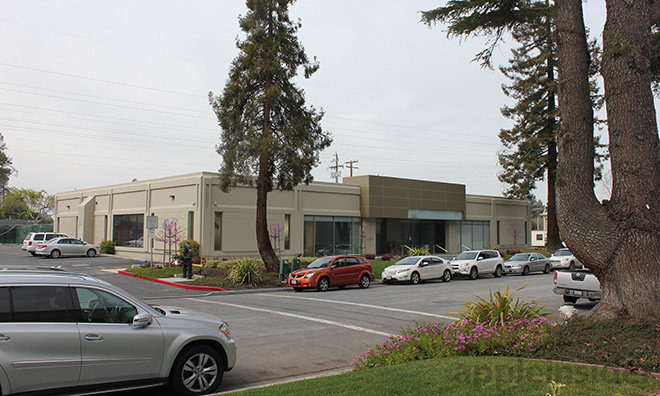
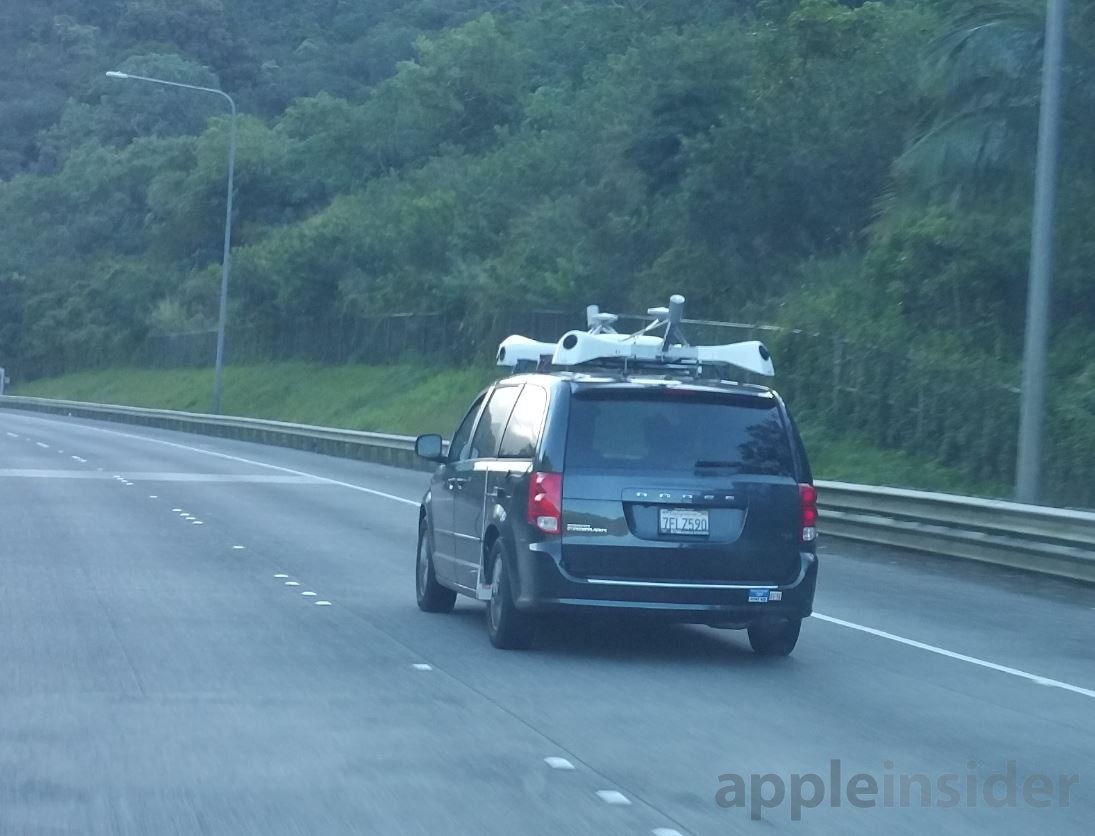
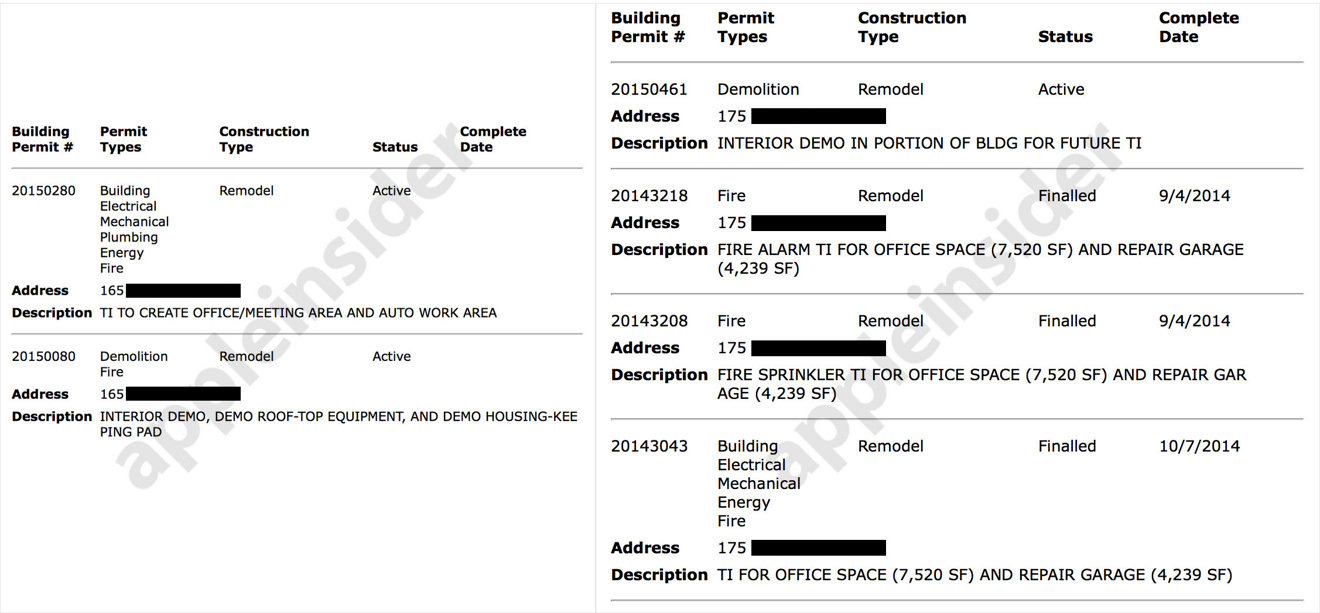
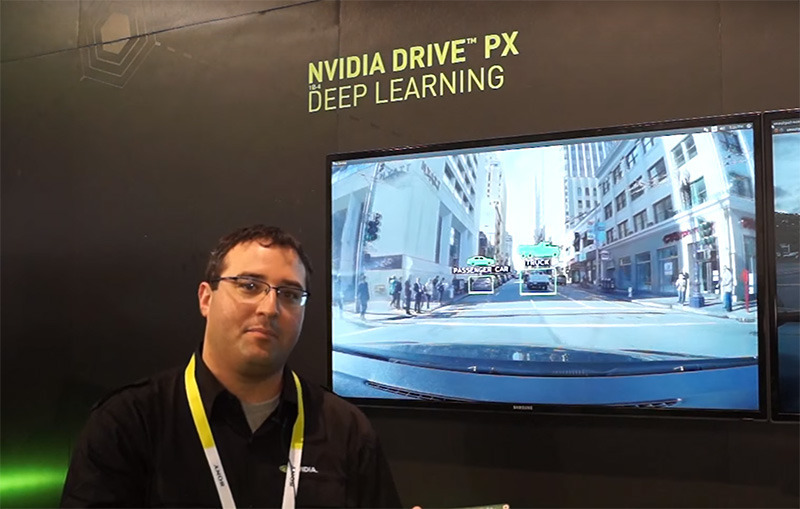
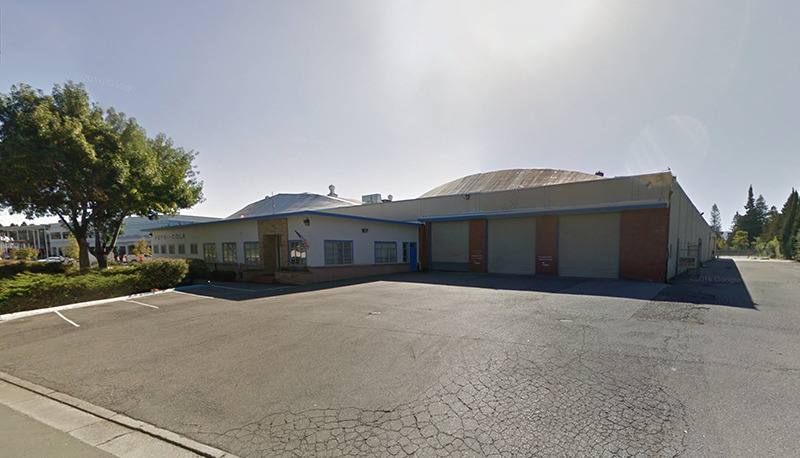

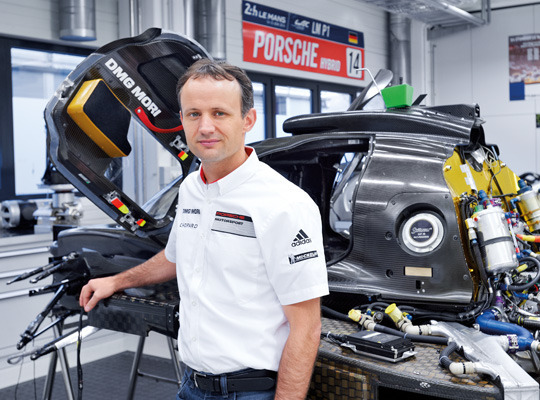

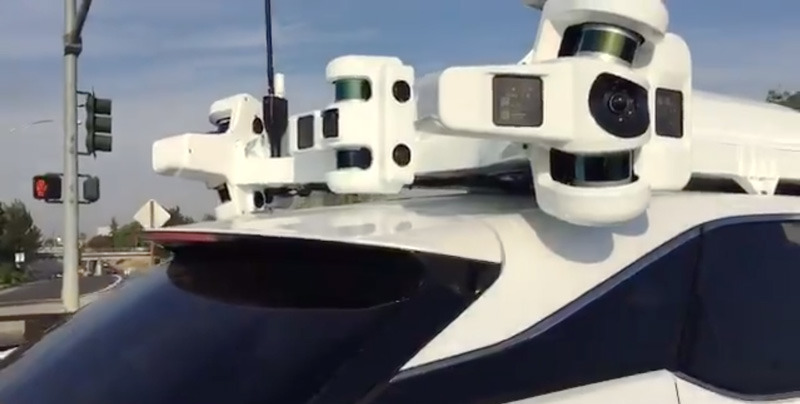
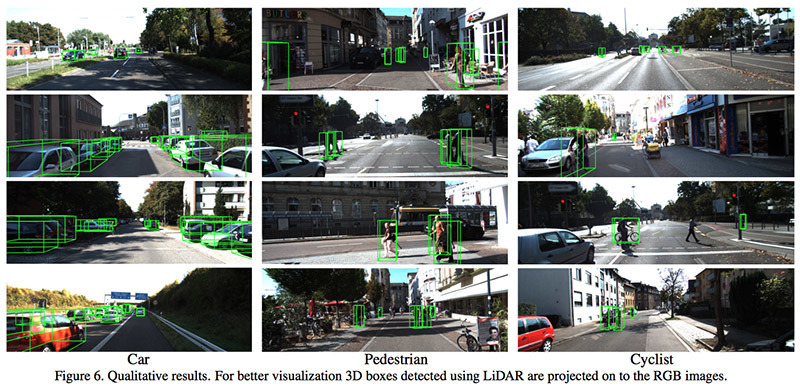

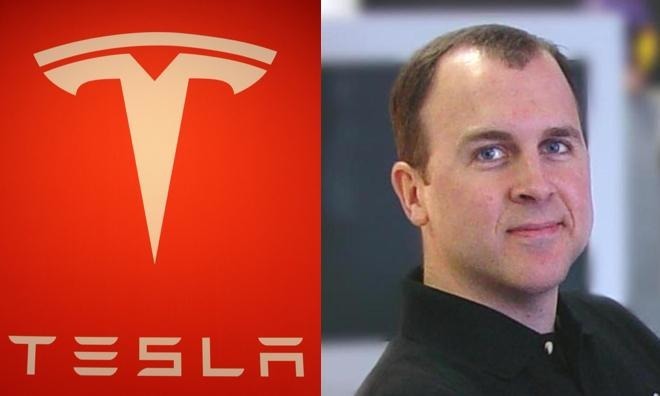
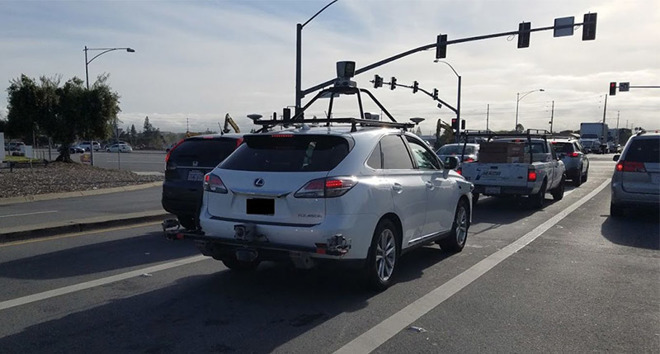
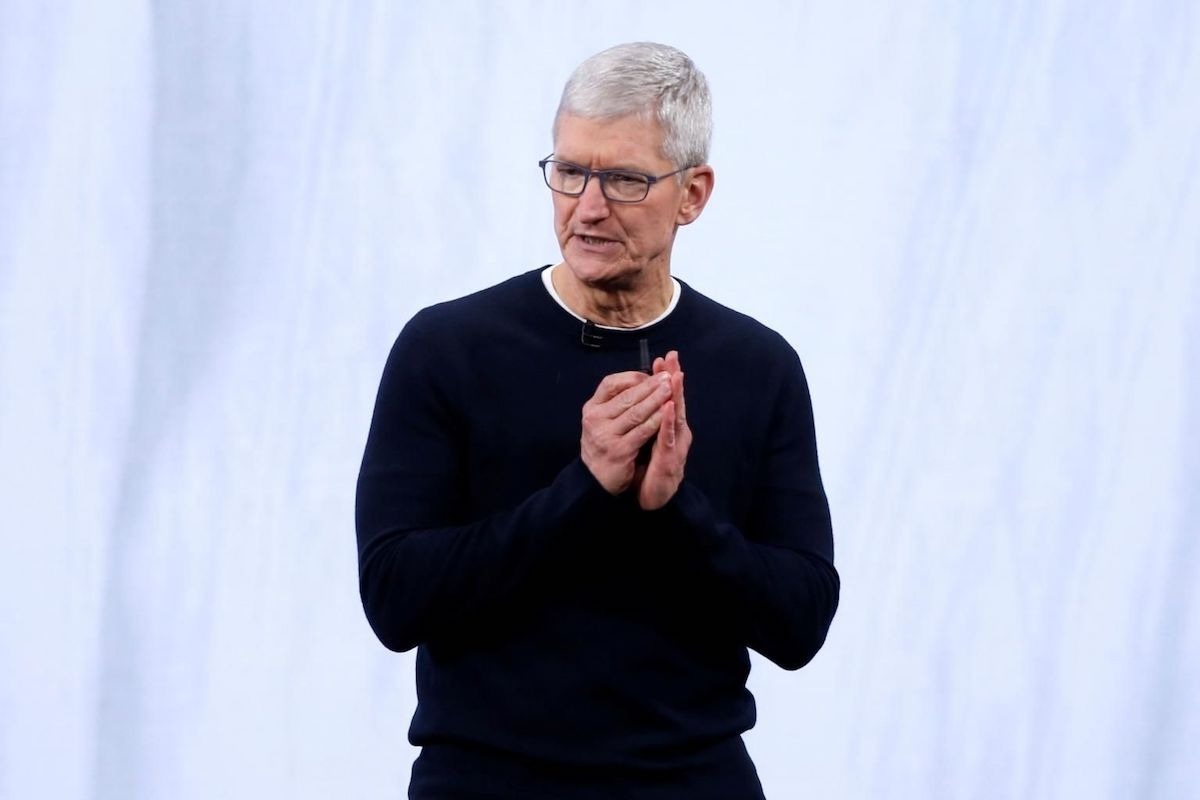

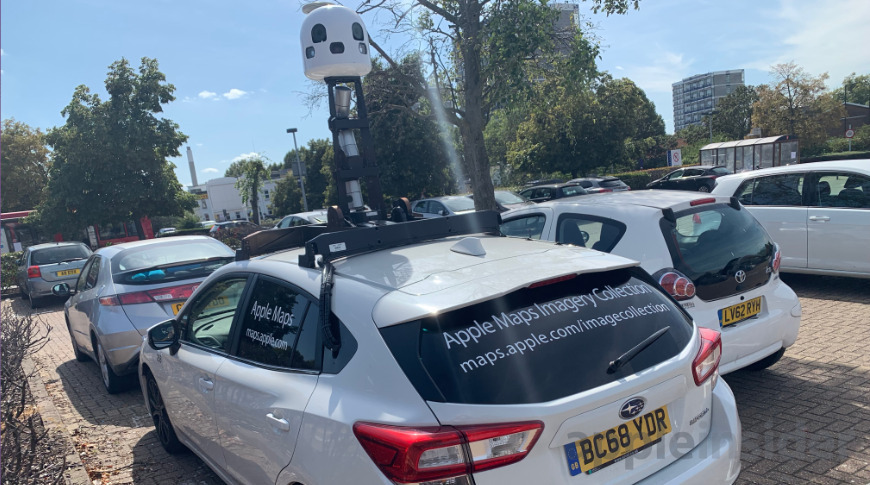
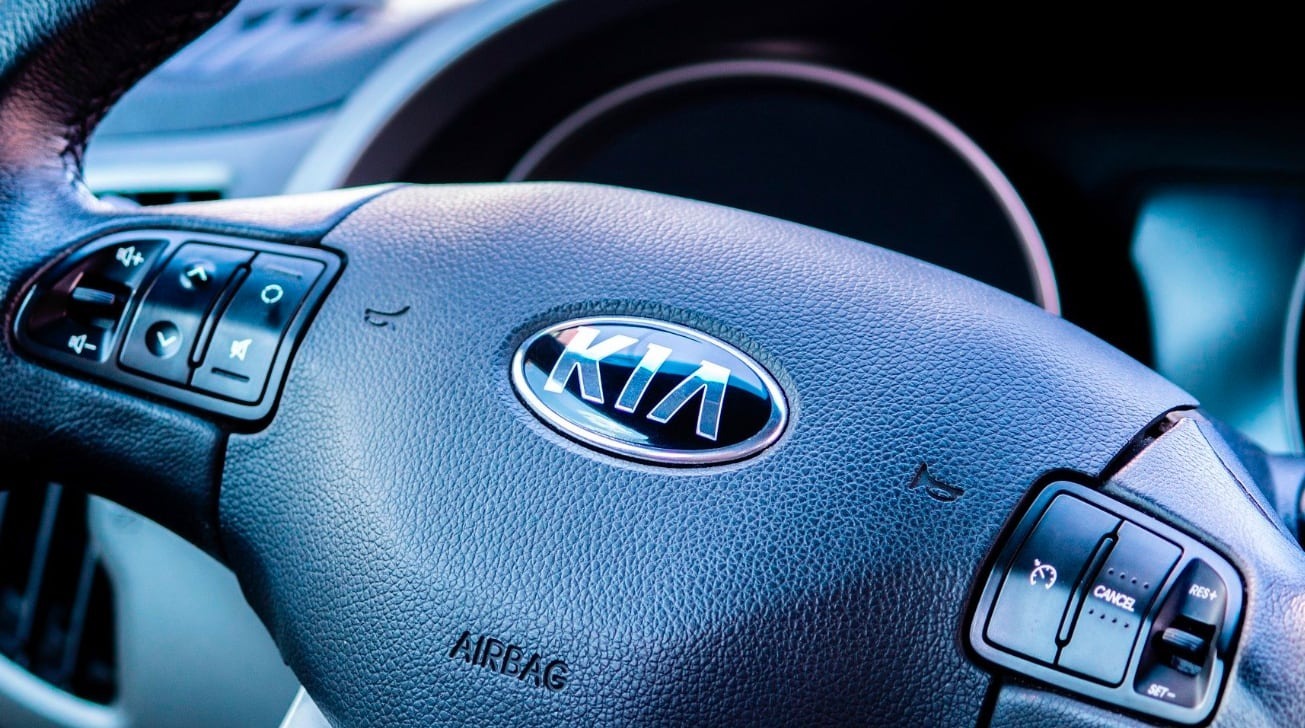
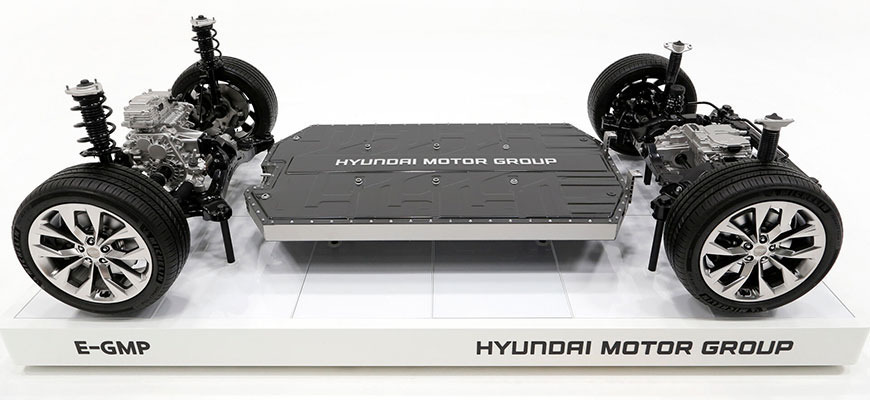
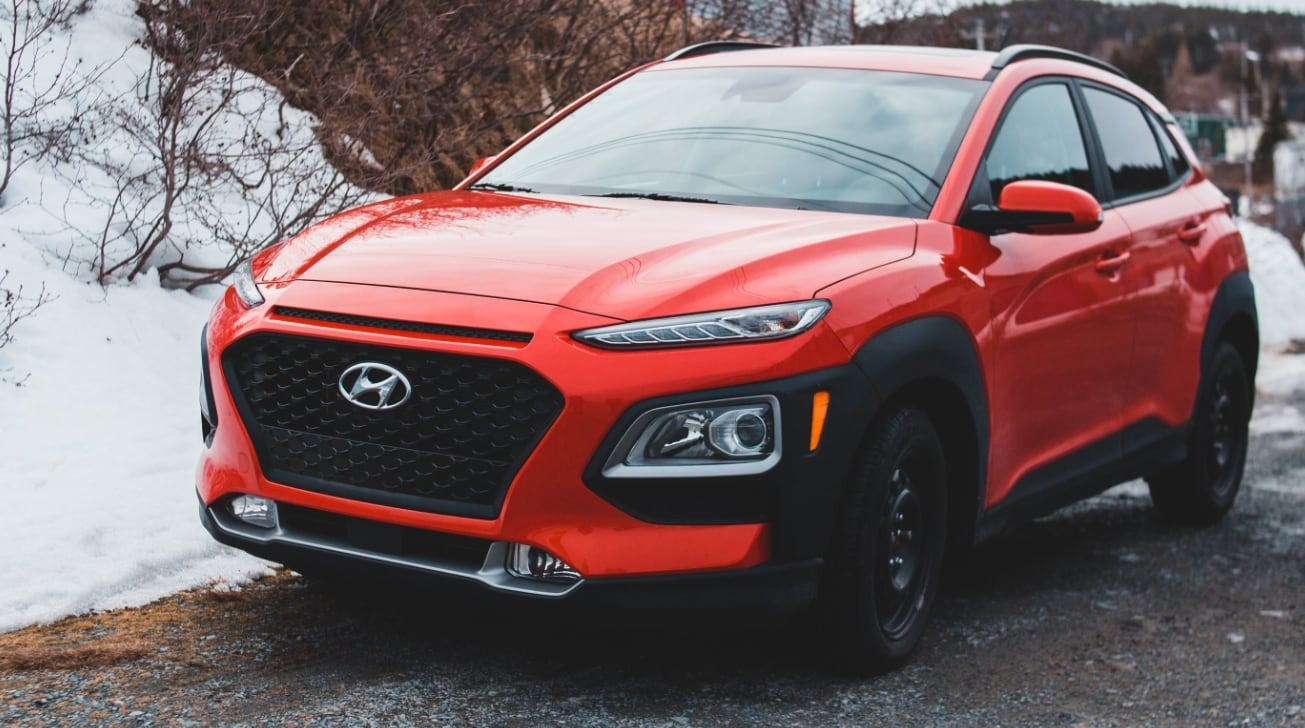
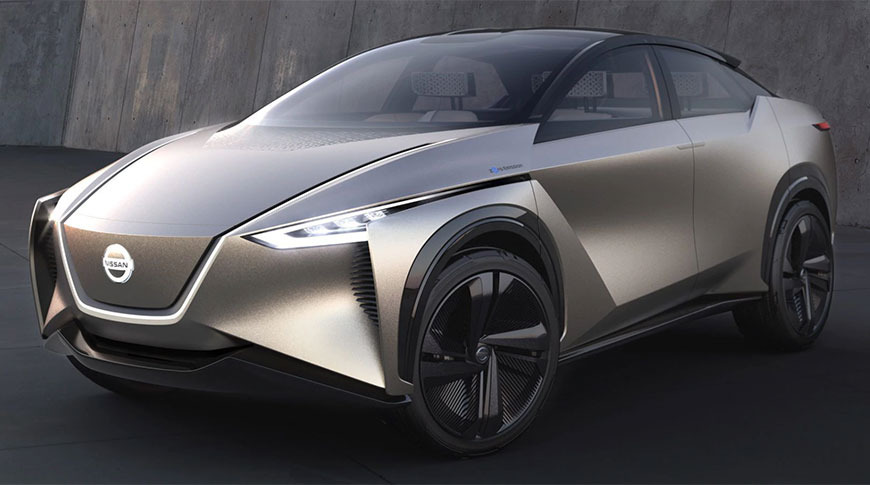
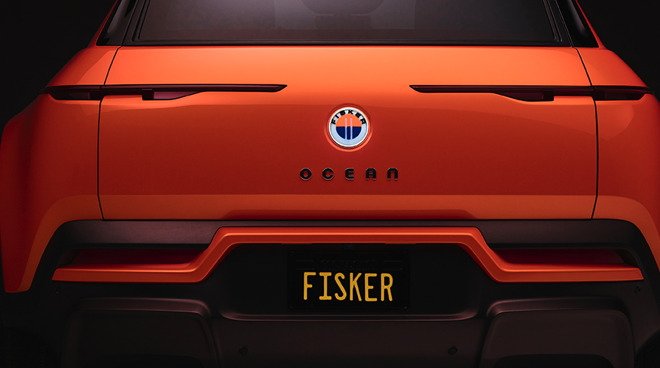
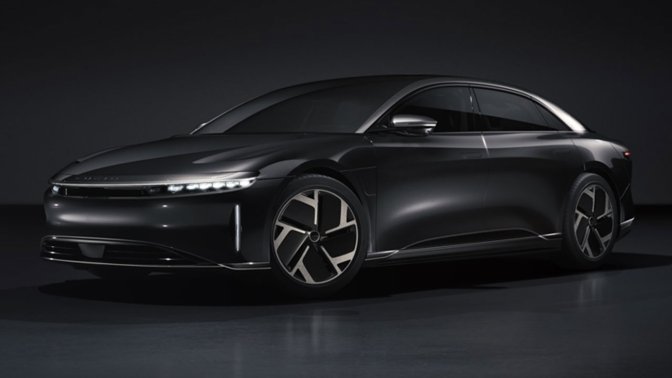
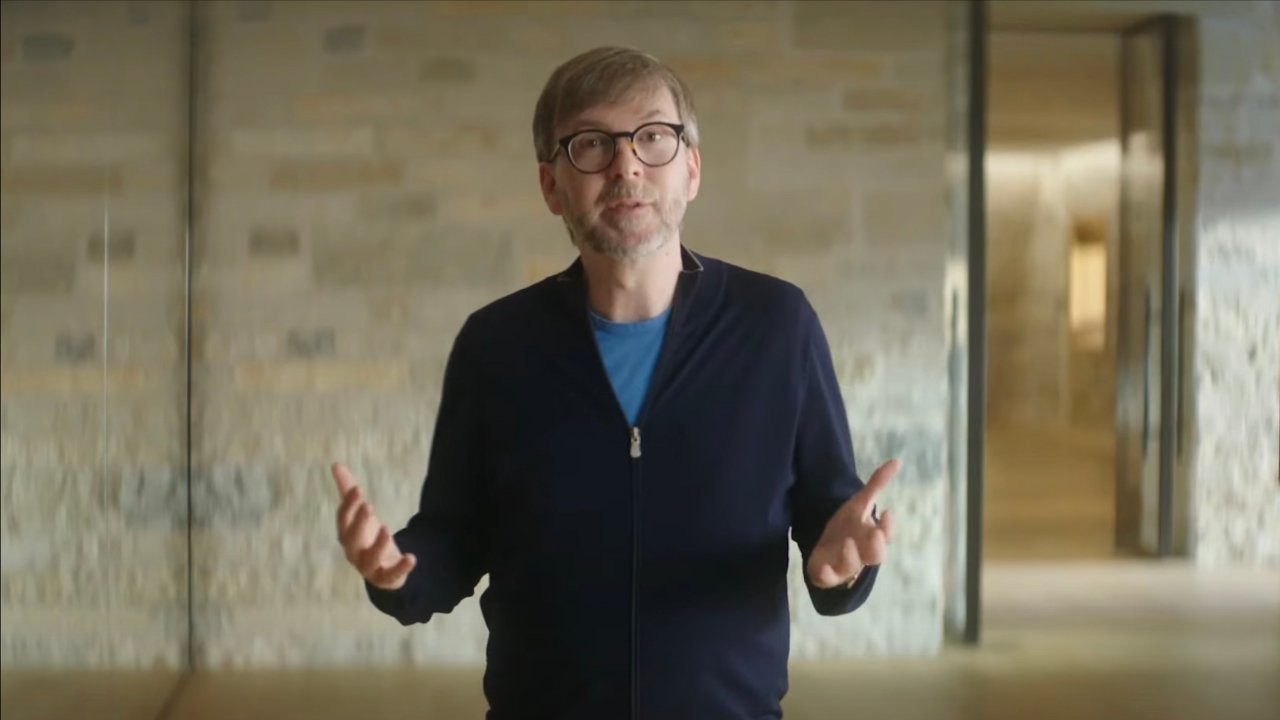

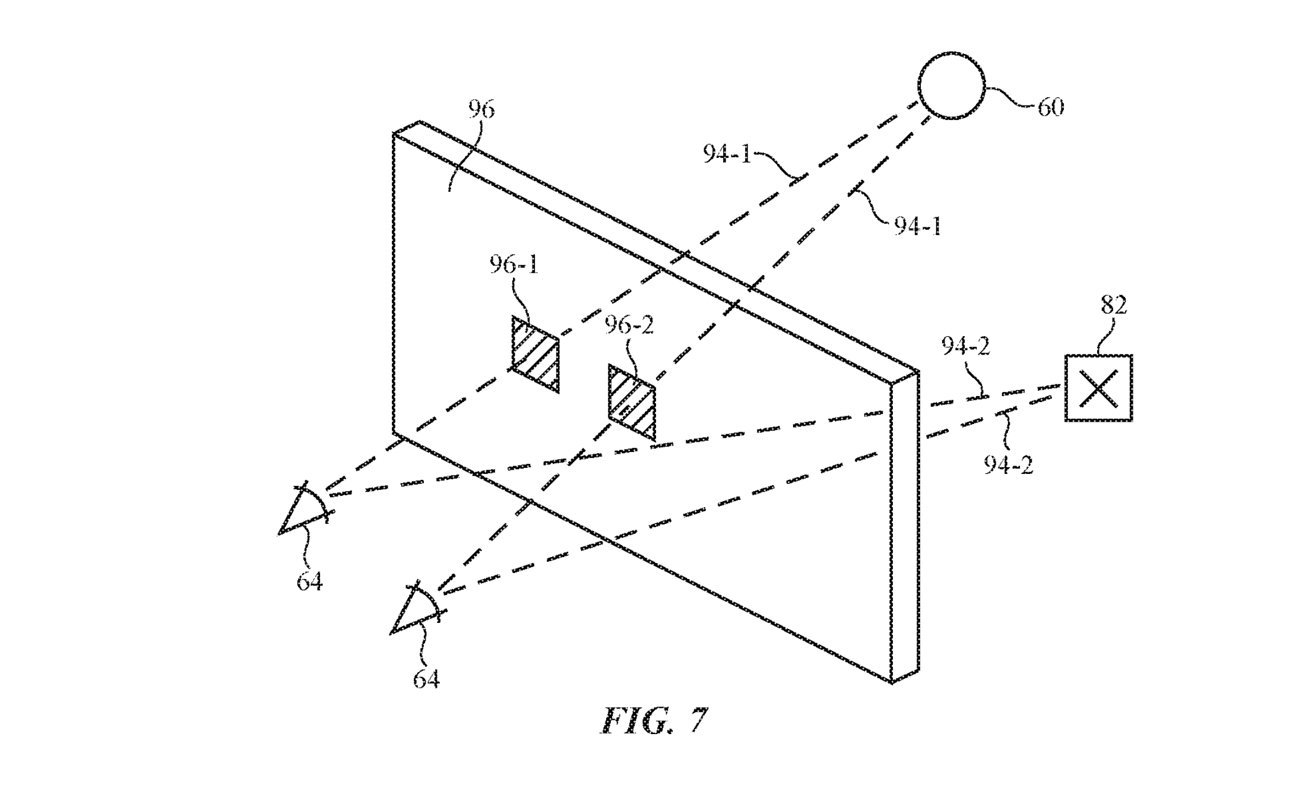
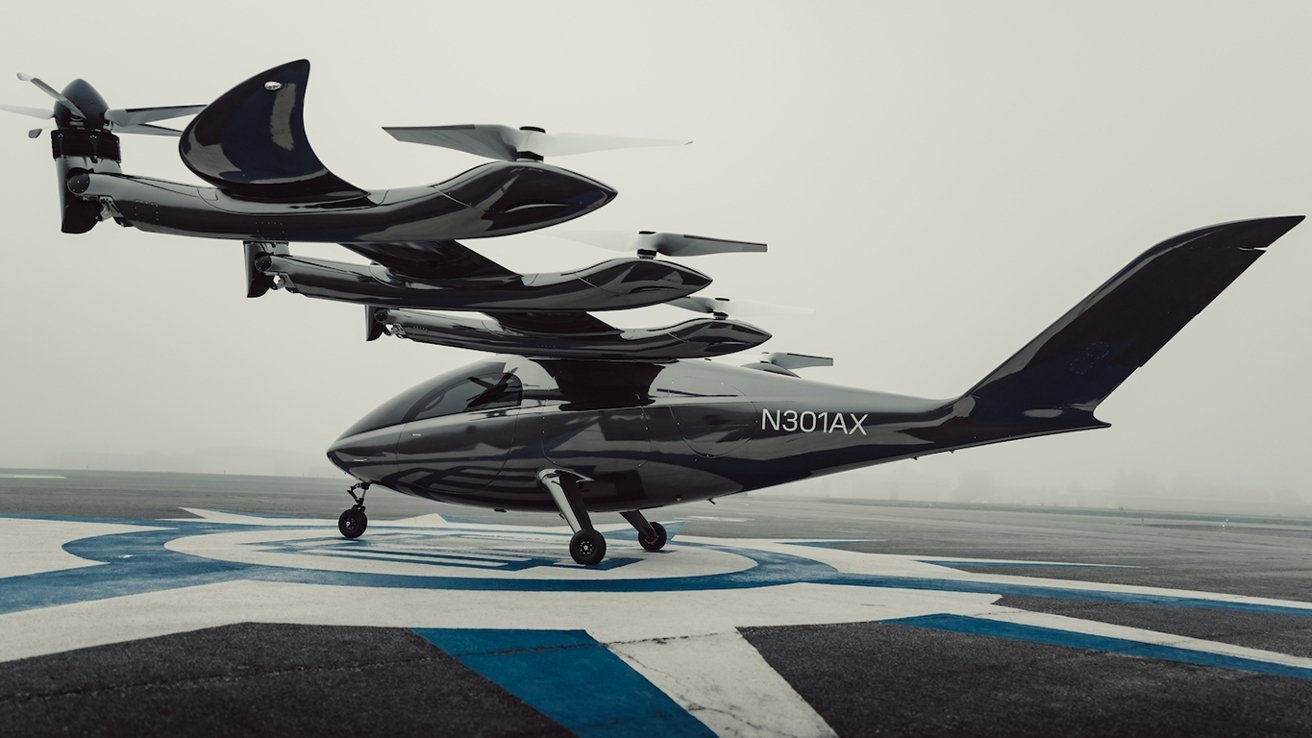
![Jennifer Waldo [via LinkedIn]](https://photos5.appleinsider.com/gallery/40182-110199-47598-92934-000-lead-Jennifer-Waldo-xl-xl.jpg)
